#the motivations and happenings in the original are very 'human' and grounded in that theme
Text
Geto and Yoshino parallel ramble:
Geto and Junpei parallels are so high in terms of the role they play in defining the themes and key events of the story. I feel like if Junpei survived, he would have written to be as a counter to Geto's character arc.
The biggest reason for why they remind me of each other is the way their death affects their associated main characters. Geto's departure and death transform the way Gojo sees Jujutsu society and his role in it, making him far more grounded and giving him a reason to help others who are weaker. Junpei's makes Yuuji see the dangers and unfairness of the world he's in, and how even a dignified death is something difficult to provide for people.
Geto and Junpei were both let down by the systems they were in. Geto's struggles were wholly unacknowledged by Yaga and any of the higher-ups in Jujutsu Tech. Junpei's suffering was noticed but no one did anything about it.
Fundamentally, they are both people who care for others. This is important in understanding their downfall.
Geto went to extremism because he thought he could protect people if he just tried hard enough. He understood that the strong hurt the weak, accepted it to some extent at the start and made it his mission to be the kind of strong person that would instead protect the weak. His motives are, even if simplistic and filled with issues, empathetic. Junpei says he doesn't believe that humans have hearts but its revealed that he's only led to this thinking because he can't stomach that any human being is capable of inflicting the cruelty he and his mother suffered through(also because Mahito guided him there).
They care way too much and that's what is used to break them.
Next, is how they are used by the special grade curses. Kenjaku is obvious, he's possessing Geto's body. Mahito's also pretty obvious, he used Junpei to manipulate Yuuji emotionally in order to bring forth Sukuna. In Shibuya Arc, Geto and Junpei are used to emotionally break Gojo and Yuuji(I'm not putting Nobara and Nanami here because they serve roles outside of the parallels I'm drawing between Geto and Junpei).
They are both characters who are broken by the systems that are meant to foster them, and are then used callously by curses to further chaos. I really want to know what kind of human emotion made Kenjaku, because I think it'd be something that works in an opposite yet complementary fashion to the cause of Mahito's birth; humanity's hatred for each other. I think it'd be like that because Mahito and Kenjaku have a discussion that's very important to the idea of 'humanity' in JJK, which is, the connection between 'the body' and 'the soul'.
Even more, Junpei was the prototype for all the sorcerers that were awakened during the Culling Games. Kenjaku brings up Yuuji as an example for the vessels, and I thought it was interesting to mention Yuuji and Junpei together when he was explaining the Culling Game participants. But I actually think Kenjaku counts as a 'vessel' (vessels lose autonomy, their souls are removed and replaced by a curse or sorcerer that was once alive and there is no way to separate the possessor from the body without killing the soul of the original).
In canon, they show the worst of human society and exhibit what can happen when you are let down and uncared for by the people around you. Their deaths happened because they were alone. Either out of choice or because they had no other options. In contrast, the lessons Gojo and Yuuji exhibited from these events was the importance of reaching out to people.
Gojo reached out to Geto and had an honest, private conversation with him before his final moments. Yuuji stopped attacking and listened to Junpei in his. Neither of these actions saved the characters, but they showed us that reaching out is important, even in the face of how overwhelming and awful the world can be.
JJK is a story about love, but it's also about the consequence of isolation and the power of community. Sukuna and Gojo are powerful, but they are overwhelmingly lonely. Yuuji calls himself a cog in the machine, and that sounds really bleak. The phrase is not used in any good context and is usually to show that an individual is detached or unimportant to the mechanism they're part of. But in this case I think a new perspective is needed. They are cogs that come together for a greater cause that they are all aware of and would eventually benefit them. Yuuji is surrounded by people who want to help him. It's what his grandpa wanted for him. Even if he dies physically alone, he'd have the hearts of others mourning for him and treasuring him.
Geto and Junpei died, but as tragic as it was they didn't die alone and their deaths made people reconsider the systems around them.
38 notes
·
View notes
Note
what motivates you artistically? :3
well right now blelaf mainly. no ok hang on. alright. so.
when i was really young i had this feeling like if we could all just understand one another, if there was a perfect way to beam your thoughts and feelings into someone's head, it would fix almost everything re conflicts and human suffering. (naive obviously but this was what i thought lol.) when i started to be aware of what it was to read good books and look at good art it felt like in some ways the closest we could come to fully articulating an idea, a moment, a feeling, and placing it in its entirety into someone's mind. relatedly, uh, bad stories/art that didn't seem to respect their audience pissed me off at the squandered opportunity (sorry the snobbery came out sorry) and made me think, dammit, the audience and types of people evoked within this deserve better and i'm gonna try. with the combo of these two things it was like ..okay i'm going to start writing and drawing. it was all about stories ideas concepts. oh and also i really liked rodents and wanted to draw them as often as possible lol. i drew so fucking many rodents. gah. these concepts were no joke deeply linked for me because as a child i genuinely felt like the bad rap rodents get from people unthinkingly condemning them via stereotypes was a symptom of a societal lack of empathy and consideration. (possibly terry pratchett's fault)

(could not locate early rat art at this moment but here's relevant scribbling. i was nine i think.)
tl;dr plunging themes and concepts i find interesting; communicating them to other people. (sometimes the concept is admittedly not highbrow. sometimes it is very silly. sometimes it is 'hey ! it would be hot if this happened to b*laf'.) it can be hard to reconcile the desire to 'communicate' via art/writing with some of my work just not having much of an audience or even feeling like i don't want to share it for various reasons lol, but in those cases i frame it to myself as, the effort of presenting the idea was enjoyable in and of itself, an act of personal communication between me and the subject or content of the work even if the thing itself will never be shown to another soul : v anyway fanwork can be a neat way to do that because it's like shared muses or canvases where what you see in them or love about them is already partially pre-communicated to people and you can hit the ground running on evoking emotions, concepts and narratives using the shared frame of reference, as well as skewing and transforming said frame as needed. btw i found another drawing of me and the sages that i didnt use in the other post so here it is

there have been many periods of my life when i was making more original work, though. (i'm sure i've said this many times now but before the sages i had a very comparable attachment to a couple of my OCs.) i also had a pretty terrible experience with fandom around middle school that sort of drove me away from heavily engaging for a long time; i was still in fandoms but basically never shared my writing outside of like PMs and servers. that's part of why my current abyss bullshit is so precious to me and also why i can get protective over it; it pretty much singlehandedly brought me back to the Blessings and Curses of being directly engaged in sharing a lot of fan content publicly. (man for a person who doesnt like bondrewd i do quote him a lot unfortunately.)
so anyway. yes. uhh sorry that was really long. i sort of just like blogging haha thank you very much for the ask! < 3
6 notes
·
View notes
Note
hi thank you so much for writing very cool inf train meta i really liked it . me n my friends were thinking about getting into kr which ones would you recommend ?
Thanks! and haha nice :3c
Well, first of all, FYI: the YouTube account for Toei Tokusatsu World Official has posted official English subs of the first two episodes of a lot of Kamen Rider series, available for free. (Many Rider series are formatted as a series of two-parter episodes.) Unfortunately the playlists are very disorganized so it's not easy to browse, and for the vast majority of these series, a full official English release does not exist. But they are a great way to sample Rider series.
Based on my tastes, I would recommend Fourze or Double. They aired in 2011 and 2009, respectively, and charmingly happen to "rhyme" despite having no connection. Fourze is a space-themed Kamen Rider with themes like the future, friendship, legacy, individuality, and competition; Double is a noir-themed Kamen Rider with "the Earth"/"Gaia" as a major secondary theme, with other themes including the past, family, memory, obsession, trauma, and choice.
Each series has a main villain and an over-arching plot, but focuses primarily on episodic plotlines, where the tight-knit team of protagonists works together to investigate the identity and motivations of the "monster" of the week (a transformed human), and try to resolve the situation and defeat them to remove their power. Fourze takes place in a parody of a stereotypical American high school and the heroes are a Breakfast Club-ish team of mismatched students. Double is set in a city boasting both advanced technology and renewable energy and a hell of an organized crime problem; the heroes are young adults who find themselves running a detective agency after the original detective was killed in action.
Both shows excel in many different areas... the main casts are charming and have great chemistry, the Rider and villain suit designs are super cool, they don't get too bogged down in the toy commercial stuff, both the episodic stuff and the over-arching plot is really well written... I would say Fourze has better writing (like Double is a 4.5/5 and Fourze is a 5/5), although Fourze has more caricatured writing than Double. Of course, neither of these tokusatsu series are grounded or gritty, but Fourze is more "cartoon-y" than Double sometimes (as a deliberate and valid writing choice). Double has a darker tone than Fourze and more bittersweet moments, though it's overall an optimistic series with a lot of comic relief.
Also, some important backstory + resolution for a character-centric subplot in Double is in a crossover with Kamen Rider Decade. I think the omission would be noticeable, so you would probably want to watch the Double parts (which are pretty self-contained, so you could skip to them) before episode 15 of Double.
Some other series that I think I've seen other people cite as good starting points:
Kamen Rider Den-O: the plot genuinely makes no sense, but the Vibes and character dynamics are so strong. A very popular, very enduring Rider series that has tons of sequel material and crossovers.
Kamen Rider Gaim: no one I know likes this show lol, but I thought I should mention it since it's really popular in some other circles. It's apparently very Urobuchi, so make your judgment based on that. I liked Puella Magi Madoka Magica a lot but it sounds to me like the kind of dialogue and character conflicts I liked in PMMM would be really tiresome in Gaim, when they'd be coming from adult characters instead of cornered, terrified children and also dragging on for like 45 episodes instead of like 12 episodes.
Kamen Rider Zero-One: I think people have talked about really liking some of the dynamics between the main three Riders? I'm mainly mentioning this because there's an official English sub and you can buy DVDs and I think find it on streaming in some places, if you're interested in that route.
6 notes
·
View notes
Text
So to start off my account, I suppose I'll info dump on one of my two Undertale AUs, UnderRule (name's a possible wip).
Plain and simple it's a AU open to the community based on one of my favorite video games, Ocarina of Time. The characters and some elements from Undertale will be put into the story of OoT.
About two or so years ago I wanted to create a UT AU to call my own and I thought of one of my favorite video game series (and the first video game series I've ever played Link to the Past). When I started thinking of which of the many games to draw inspiration from, I first picked Ocarina of Time and that's when I found there's so many similarities. The Deltarune symbol and the Hyrule royal family crest being similar, the fact that there are six human souls (not counting the player character) and six medallions, and several of the characters fitting well together between the two games.
I wasn't sure if I wanted the UT characters to be placed in the world of OoT (just kinda swapping places with them, being above ground), or still being in the Underground. I think picking both is the better option. Although, I'm not sure how a underground desert would work with no sun and all that (kinda an aesthetic type of thing). Not sure if some places will get their names from UT or OoT (Hotland/Death Mountain for example)
Frisk (Link) has to venture around to free Boss Monsters who have been corrupted into Amalgamates. They can either pacify them, returning them to their original state, or kill them. Both tasks can be carried out with items Frisk finds along their way, resulting in either a Pacifist or Genocide route.
There won't be any time travel and the first three dungeons (Deku Tree, Didongo's Cavern, Jabu Jabu's Belly) will be merged with the others (Forest Temple, Fire Temple, and Water Temple).
I have most of the main cast picked and the reasons behind it, so....
Frisk (Link) - Starts in Temmie Village. Has a Temmie companion who "helps" in Frisk's journey. Route depends on which items they use and how they use them. I originally (and very briefly) thought to put Sans in this role, but quickly changed it, as he's not the main character.
Chara (Zelda) - Their motivations and the ending of the storyline will depend on which route Frisk takes. Might have them be friends with Asriel, might not.
Temmies - Takes place of the Kokiri and the faries. One accompanies Frisk on their journey. Will try to convince them against the Genocide Route.
Flowey (Ganondorf) - Is not connected to Asriel. Will probably take the form of a large flower monster normally. Final Boss form is Omega Flowey. I don't think I've seen a AU where Asriel and Flowey aren't connected, much less Flowey being his own monster.
Sans (Happy Mask Salesman) - Might reference having dreams of alternate events happening or deja vu. Might even comment on the Moon looking different or how the mask he sells have a mind of their own.
Papyrus (Running Man) - Runs around to train to be in the Royal Guard. Could also be a postman.
Alphys (Lake Scientist) - "Likes to study fish." Her and Undyne are probably together.
Napstablook (Guy in Windmill) - Probably wouldn't mind if the windmill was messed up. Could be a form of a jukebox where Frisk could listen to all the music they've discovered or come across (such as overworld themes) and remixes of those songs.
Gaster (Poe Collector) - Once Frisk completes a sidequest for Sans, they can obtain a mask that looks similar to Gaster. Would allow them to find Gaster and take on a sidequest to look for his missing fragments.
Nicecream Guy (Magic Bean Seller) - Maaaybe? Although, this could be Sans too since he works as both sentry and a hotdog(cat) salesman. He also tries to sell you snow while increasing the price.
Burgerpants (Fisherman) - In OoT you can steal the fisherman's hat and drop it in the pond.
River Person (Malon/Epona) - The only character I can see for Epona and being able to travel faster.
Shyren (Scarecrows) - Once Frisk befriends her, they can make up a song with her. Once they play/hum/whistle it, she will be summoned(?) and help Frisk get to hard to reach areas.
Dog Guards, Rabbit and Dragon Knights (Royal Guardsmen) - Self explanatory.
Muffet (House of Skulltula) - Will be looking for her lost spider friends. Will reward Frisk with various items, discounts, and hints. Will still run a bakesale.
Monster Kid (Kid in Graveyard) - Looks up to Undyne and the Graveyard is right where the Shadow Temple is in OoT.
Asgore (Rauru) - Sage of Justice (Light). Orb of light instead of owl? Does talk to the player every time you die and when you sleep after fighting Toriel in Undertale. Separated from his family?
Asriel (Skullkid/Saria) - Sage of Kindness (Forest). Close friends with Frisk. Not connected to Flowey. Separated from his family?
Grillby (Darunia) - Sage of Bravery (Fire). Runs a bar in Hotland. He and the other fire monsters take the place of the Gorons.
Metaton (Ruto) - Sage of Patience (Water). He and the other monsters from Waterfall take the place of the Zoras. Originally thought to give Ruto's role to Gerson, but the whole thing with the Zora's Sapphire being a engagement thing in OoT would've been weird if people in the Undertale community drew fanart of the whole scenario. Metaton does wear a dress and sings to Frisk in Undertale and the Lake Labratory (by extention Alphys) is near where you can enter Zora's Domain, so it fits better.
Undyne (Impa) - Sage of Perseverance (Shadow). Captain of the Royal Guard and Chara's bodyguard. Her and Alphys are probably together. Wouldn't be surprised if people thought I'd give Ruto's role to Undyne, but she fits better as Impa. When you first meet her in Undertale, she's in shadows stalking you and even disappears in them. She directly associated with royalty as she is the head of the Royal Guard.
Toriel (Nabooru) - Sage of Integrity (Spirit). Her and the other monsters from the Ruins take the place of the Gerudo. Separated from her family?
I think it'd be cool to see Toriel go from sweet motherly figure, to ruthless fighter. That and I think seeing her in the Gerudo outfits would look pretty. Maybe even having the curved swords they fight with?
Mini games/sidequests:
Mask Shop- This would open up a side story type of thing between Sans and Papyrus and allow you to get a mask that would help you find Gaster. It would follow the same path (and maybe add more characters to give masks to). The Keaton Mask could be a Toby Mask that allows you to get past the guardsman towards Death Moutain/Hot Land. The Skull Mask would be something you'd give to Asriel (although, not sure if it'd still be a skull mask. He might find it cool). I can see the kid in the graveyard/Monster Kid looking up to Undyne and wanting to be scary and cool like her, so the Spooky Mask could look like her or resemble her helmet. And Papyrus trying to train to be in the Royal Guard by running could be encouraged by Sans by giving him the Bunny Hood. (As I'm typing this, I just remembered the Fluffy Bunny book that Papyrus likes.)
Fairy Fountains- I actually intended Metaton to be the faries and it still fits. Instead of the laughter when you summon the faries, you'd get Metaton showing up in his square form doing the "Oh, yes" line.
Trading Game- I think for this one, instead of getting the Biggoron's Sword, you'd get an item depending on the route you'd take. Maybe a powered up stick or knife.
Those are the main ones I have so far and I'm open to change stuff around if others think there's characters that would fit others more.
As for how Undertale could fit in the other Zelda titles,........ I dunno. Obviously there's Majora's Mask that can still have the same characters, but some from OoT don't show up in MM especially the Sages and there's only 4 dungeons (5 if you count the Moon).
As for alternate versions of UnderRule, I can definitely see some versatility here. To start off, I can see different versions of this Sans being named after the Masks from MM. I thought of naming Classic Masky, but it sounds kinda silly. I settled on Deku, while Fell could be Goron, and Swap could be Zora. When you get to some other AUs, you could make some connections. The Breman Mask could be Aviantale/Birdtale. If you wanted to take a different approach with Swap, Swap Papyrus could have the Postman's Hat. Romani's Mask could be Farmertale.
Every year I try to beat both games, so maybe this year I'll get more of a chronological event type of thing going, maybe even sorta scripts(?). I can't see this actually becoming a game in its own right, but I think it'd be pretty cool.
As far as that, I'm more than likely not gonna do much with it. Again, it's open the community type of thing. All I ask is no problematic ships, please credit, and please be kind to one another have fun with it.
I can't think of too much to say and if I leave this in my notes to post later, I'm I'm gonna either procrastinate and add more, or completely forget to post it. I don't expect this AU to get too much attention, I just kinda wanted to throw it out into the void and out of my head. Maybe there'll be a small handful that likes it.
#Undertale AU#UnderRule#I'm afraid of putting a Zelda tag#Dunno if anyone else in that fandom likes Undertale#Dunno if I'm doing this right#Probably all over the place and makes 0 sense
0 notes
Text
4/23 - Cyberpunk: Edgerunners
I'm a big fan of Cyberpunk Edgerunners. I originally played Cyberpunk 2077 when it came out, and I've also toyed with the Cyberpunk 2020 and Red tabletop games. Thus, I very excited to watch Edgerunners again (I watched it on release, too). In going back through these episodes, I refreshed myself on the themes that make Cyberpunk, Cyberpunk - the disastrous consequences of unchecked capitalism, and the dangers of over-reliance on technology.
From the first episode of Edgerunners, we bear witness to the cash-is-king society of Night City, California. David is constantly looked down upon by his classmates for not being as financially well-off as his peers; his mother dies as a result of a lack of insurance coverage and the care of an inferior medical establishment; he turns to a life of crime in order to live. The environment that is built by these episodes show the possible life paths in the Cyberpunk universe - either buy into the system and work to live, or break the law to do the same. No matter which way an individual turns, the motivations are the same: to earn enough eurodollars to cover their basic necessities.
Technology is a central element to the Cyberpunk series, and a defining factor in episodes 6 and 10. Maine experiences absolute detachment from reality as a result of his cybernetic implants; David experiences a similar detachment in his assault on Arasaka Tower. While I don't think anything directly like this is happening in real life, it's a cautionary tale as implants and cybernetics become even more enhanced in the future - at what point do we lose grips on our humanity as a result of augmenting ourselves? This may be a stretch, but I also think that this can serve as a warning for the use of modern technology. As the line between virtual and reality becomes blurred, how do we stay grounded?

0 notes
Text
Lus and the Human Portal Clone Theory
Even before Keeping Up A-fear-ances aired, I have been working for almost a year now on running through all the possible various suspects with wonderful folks like @sepublic , @anistarrose , and @elementalist-kdj . Like the post title indicates, from sheer process of elimination, the only conclusion that made sense to me was a clone made of Luz by the portal door, and I’ve been working on refining and reworking said conclusion up to the version I will lay out here.
Now, as @safetayy , @theowlhouseheadcanons , and @50shades-of-blue have heard from me before, the portal I've long suspected was not made to go from the Demon Realm to the Human Realm, but rather to go from the Human Realm to the Demon Realm by humans, for humans. This is because it then could tie into the hypothetical existence of a Luz clone without having the issue of asking where Eda, Lilith, and King's clones are, as the clone in this case is the result of a function of the door to create a basic level duplicate of any human that passes through it rather than it happening for just anyone that passes through.
With this, it's because the suitcase form of the portal looks as thought it indicates it was used for temporary trips to the Demon Realm, much like how suitcases were used when railways and international boats made travel more accessible for the middle and lower classes. For example:
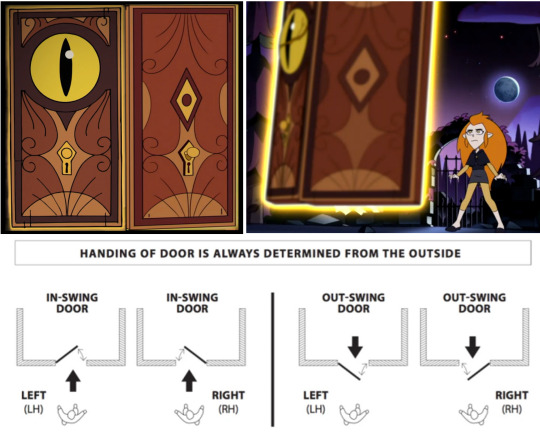
Going by the way the door “faces” and the way it swings open, the ergonomics of the portal makes it look an awful lot like a right handed out swing door, with the Human Realm on the “inside” and the Demon Realm on the “outside.” And the arrow in the diagram depicts the general direction of traffic that such right handed, out swing doors are typically design with in mind - ergo, showing what way the portal appears to facilitate travel in.
Now, before you ask, the reason why I think the portal could have been created in the human realm in the first place is that it might require an extra component/bit of help or two from the Owl Deity which I’ve discussed before in the past as hinted by these connected designs:
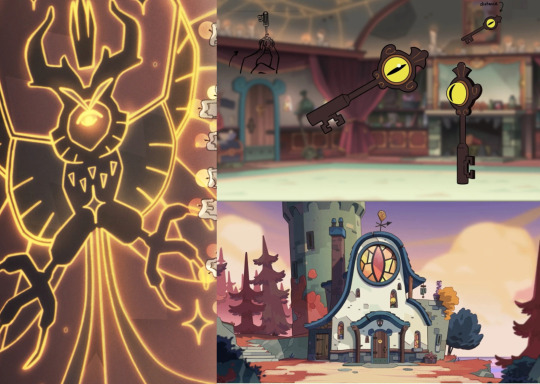
I’ll explore how I feel the revelation that such a twist about the portal’s origins could play into the themes and narrative of the show under the cut, but overall, I feel these are potential significant details to keep in mind for the rest of this arc of building a new door and handling the idea of Lus having initially been made as a temporary-duration clone, hence how "Luz" comes off so uncannily in the letters as she wasn't meant for long term impersonations.
That, and why I named this the Human Portal Clone theory, for those wondering about the name.
Alongside this, my thought has been that walking back through the portal to the Human Realm basically makes the portal send a recall signal to tell the clone to return to it, where the clone would be reabsorbed into the portal and its memories are given to the original. However, with Luz going back into the Demon Realm for a brief time in YBOS, I am of the mind that it doesn’t just make another clone, but rather that doing so merely made the door turn off the recall signal and allowed "Lus" to resume the impersonation.
And as for the clone itself and why they’re writing letters to Camila, well, imagine it from Lus' perspective. To her at the time of creation, the last thing she probably knew was that she had been chasing the cute little owl that took her Azura book into the woods, and right when the bus to Reality Check Camp was about to arrive.
Also, if you think about it, Lus being the work of someone we/don’t know yet raises way more plot threads/questions than answers compared to being the work of the portal, as outlined below:
TLDR at end of post for those wondering
Belos? How and why before YBOS where he actually started paying attention to Luz for the first time and actually got his hands on a portal?
Eda? Why would she do all this and not tell Luz she can goof around without needing to worry about her mom or the camp/in time to fool the camp, especially when it took a good amount of time for Eda to even start feeling that close to Luz?
Hooty got ruled out from the getgo since he can’t hold pencils, King just isn’t that subtle, and everyone else that Luz knows has the major issues of just straight up not knowing about the camp in the first place. Well, that and a lack of another known method of getting to the Human Realm in the first place.
The camp? Why would they worry about a missing camper whose disappearance is all HER fault and thus would more logically result in a call to her parent than some convoluted clone conspiracy?
And finally, some currently completely unknown third party?
If we’re talking a Changeling, A) it’d be easy for Luz to dismiss them and B) that just makes all the ominous portrayal of Lus super straightforward instead of a subversion like is the show’s shtick.
If we’re talking dimensional counterparts, A) they have to REALLY have led a very similar life to Luz’s in order for there to be enough common ground for Luz to listen, and B) dimensional counterparts aren’t even a confirmed or likely thing that people cooked up from Episode 1 side characters influenced by Amity’s concept art.
And if we’re talking some complete surprise third party group or another, it doesn’t make sense to introduce a third party and their motives and plans to the show this late in when Belos is already taking up the bulk of it all.
Hell, if anything, the continued existence of the duplicate in of itself would indicate that the target of the conspiracy is none other than Camila Noceda than anything to do with Luz or Eda, especially with the complete lack of anyone taking advantage of Luz and or Eda.
From the getgo, Witches Before Wizards already hard-baked into the show the idea that Luz is NOT inherently special or anything into the foundations of the show from the getgo - ergo, Camila likely just is an absolutely regular human being, someone who has no justification for such a convoluted conspiracy to surround them.
That said, I believe that the idea of the portal having originated from the Human Realm could potentially play into some interesting stories to be had with Camila and Lus here, especially as the conspiracy board shot from the promo was confirmed by Dana to apparently be from S2A, not from the episodes past Yesterday’s Lie:
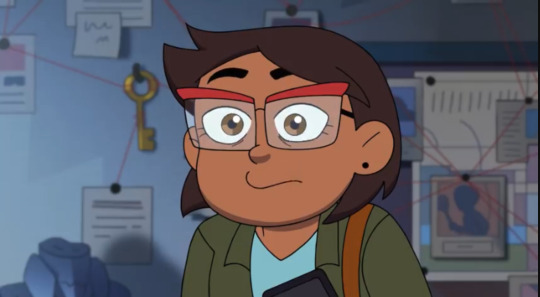
After all, with Luz searching the library for a way home this coming episodes, perhaps she might figure out something the next couple of episodes that allows her texts to send through, which would logically lead to the above picture. That, and Camila and Lus being confused by and trying to figure out what’s going on there.
I mean, the cabin in the woods likely has a very close connection to the portal and it’s origins given how closely tied the two structures seem to be, and as far as we can tell, Luz never mentioned the cabin in her videos to Camila, but if Lus tries to retrace her steps, that would be a natural vector to lead Camila to the cabin and thus allow us a chance to actually investigate it.
That said, all following the trail would do is lead her and Lus to a dead end at the abandoned cabin, where they would have nothing else to do except discuss their complicated relationship concerning Luz and twiddle their thumbs while waiting for Luz to finish things on her end - which while something I think would be interesting to see, I just don’t see how much of a way to keep them in the greater picture of the show without some kind of project or activity that the two of them could work together on on screen.
And that’s what leads me to a particular train of thought here, starting with the question of what if Luz FAILS to make a working portal over the course of S2A and such?
With the possible in-universe mystery over what the heck is going on with Lus, perhaps the cabin might hold some notes from the original last human owner - if not potentially the creator - of Eda’s portal as well as potentially some of the same materials and such from previous trips.
Cue CAMILA building a working portal, following in the footsteps of the original creator and such and thus finding a reason to stay on screen, all the while potentially demonstrating both why Belos wanted the portal instead of making his own, as well as diving into the Owl Deity’s connection with the original portal. Heck, maybe the Owl Deity is only accessible in the Human Realm and that plays a part in Belos wanting to get to the Human Realm, which would bring Camila directly into contact with the magic her daughter has been interacting with.
Also, just imagine the internal conflict going on here with Lus. After all, helping Camila build a portal to get the original Luz -and hoo boy would that be a tough thing to grapple with- would most definitely do that and make both Lus AND Camila question how much the latter likes Lus vs Luz.
Like, just imagine it. There would be major chances for Lus and Camila to discuss what would happen if and when they’re finished with the portal, and what will happen to Lus’ relationship with Camila if and when Luz gets back.
Does Camila really prefer her daughter to be all more “normal” like Lus, or does she prefer the old, “weird” daughter from before the summer with Luz?
Perhaps she might be able to figure out how to strike a nuanced balance between the two, and all on a metaphorical journey to truly build a better connection between her and her daughter(s?).
TLDR: Or in short, I can’t help but feel it would be fitting to see Camila building a bridge WITH Lus TO Luz.
Particularly, by being the one to craft an actual working portal in the Human Realm instead of Luz in the Demon Realm, showing a parent putting in an active effort to get down to their child’s level rather than waiting for said child to try to get up to their parent’s level even if they can’t or find it incredibly hard to do so.
#the owl house#the owl house theory#owl house theory#toh theory#toh#owl deity hooty theory#camila noceda#lus#lus noceda#luz noceda#toh speculation#the owl house speculation
99 notes
·
View notes
Photo






Favorite History Books || Grand-Guignol: The French Theatre of Horror by Michael Wilson and Richard J. Hand ★★★★☆
The phrase ‘grand-guignol’ has entered the language as a general term for the display of grotesque violence within performance media, but it originates in a specific theatre down an obscure alley in Paris. The Grand-Guignol was a remarkable theatre. For more than six decades it thrilled its audiences with a peculiar blend of horrific violence, the erotic and fast-paced comedy. In its time it achieved international notoriety and became one of the most successful tourist attractions in the French capital.
It is, therefore, all the more extraordinary that, both in its lifetime and since its demise, the Grand-Guignol has been virtually ignored by academics and today has the status of one of the world’s great forgotten theatres. It is not difficult to lay the blame for this neglect at the door of institutional conservatism and general disdain in the past for the serious study of popular theatre in academic circles. For many years the Grand-Guignol was simply deemed unworthy of serious consideration and the very recipe for its success with the public was sufficient to secure its dismissal by theatre historians. It is, therefore, to be welcomed that recent years have witnessed a growing interest in popular culture; the horror genre, in its many forms, has now entered the arena of scholarly debate. This book has been prepared in that context and, partly at least, in response to the lack of material available on the Grand-Guignol, particularly to the English-speaking reader.
The Grand-Guignol emerged at a crucial and exciting time for theatre. It was conceived in the nineteenth century, directly from the groundbreaking work of André Antoine and his fellow naturalist radicals at the Théâtre Libre. In fact, it grew up to become a child of the twentieth century, emerging as a complex and seemingly contradictory mixture of theatrical traditions and genres characterized by its use of both horror and comedy plays, incorporating melodrama and naturalism, and going on to reflect the influence of Expressionism and film. Yet at its heart it always remained a popular theatre and, more crucially, a modern theatre. If the dawn of the twentieth century was a critical period in the development of European theatre, then the same can be said for the horror genre itself. As Paul Wells states: As the nineteenth century passed into the twentieth, this prevailing moral and ethical tension between the individual and the sociopolitical order was profoundly affected by some of the most significant shifts in social and cultural life. This effectively reconfigured the notion of evil in the horror text . . . in a way that moved beyond issues of fantasy and ideology and into the realms of material existence and an overt challenge to established cultural value systems.
The Grand-Guignol only became what it did because it emerged when it did and where it did. When talking of a ‘Theatre of Horror’ one might imagine the monster-iconography and Gothic extravaganzas (ironic or otherwise) on display in Richard O’Brien’s The Rocky Horror Show, Andrew Lloyd-Webber’s Phantom of the Opera, and even Anne Rice’s Interview with the Vampire. But as a realist form that never strays far from a grounding in Zola-inspired naturalism, “Grand Guignol requires sadists rather than monsters”. Although the Grand-Guignol steers well clear of all things supernatural, it pushes the human subject into monstrosity, extrapolating, as it were, la bête humaine into le monstre humain. André de Lorde sums up this aspect of the Grand-Guignol when he writes in the preface to La Galerie des monstres, ‘we have a monster within us—a potential monster’. The psychological motivation of the Grand-Guignol protagonist/antagonist—in the comedies as much as the horror plays—is dictated by primal instincts, or unpredictable mania, the plots obsessed with death, sex and insanity and exacerbated or compounded by grotesque coincidence or haunting irony.
Aside from a few books on the subject, the Grand-Guignol’s most substantial surviving legacy is the collection of scripts, housed at the Bibliothèque de l’Arsenal, fifty-five of which are contained in Agnès Pierron’s Le Grand-Guignol. There also exists a number of photographic stills, documentary footage, press cuttings, programme notes and eye-witness accounts. The most useful of these are the memoirs of Paula Maxa, the most celebrated Grand-Guignol actor; what she is able to tell us about performing at the rue Chaptal is invaluable, in spite of her subjectivity and desire to create her own mythology. Apart from this we have very little to tell us about the nature of performance in relation to Grand-Guignol and we are left to our own hypothesizing. To this end we have established a Grand-Guignol Laboratory at the University of Glamorgan to investigate the performative nature of the form. Using student actors, we have attempted to learn more about Grand-Guignol performance through the practical exploration of scripts and themes in the drama studio and many of the conclusions contained in this book are informed by that work. We would agree with Mel Gordon that the Grand-Guignol greatly influenced subsequent horror films, even though it was, ironically, the cinema that contributed largely to the theatre’s demise. In the Grand-Guignol Laboratory we have found films particularly beneficial as an entry point into our speculative study towards understanding performance practice at the Grand-Guignol. At the same time, it would be a grave mistake to make assumptions about the Grand-Guignol based solely on cinematic evidence. Cinema and theatre are different forms and so we have always trodden with great care in this respect. It is a difference recognized by Maxa herself when she says:
“In the cinema you have a series of images. Everything happens very quickly. But to see people in the flesh suffering and dying at the slow pace required by live performance, that is much more effective. It’s a different thing altogether.”
#historyedit#litedit#grand guignol#19th and early 20th#french history#european history#history#horror#history book#nanshe's graphics#tw: blood
50 notes
·
View notes
Text
Can I just say Bones does not get nearly enough credit for how well he reads people?? Like, we all forget that he is not only a doctor, he's a psychiatrist as well. And not only is he insanely good at reading Jim, we also see him read and understand Spock (who is his opposite and with whom he frequently disagrees) and push him when it's necessary. It's Bones' words that make some of the most powerful exchanges out of all the 79 original episodes. Here is proof (and there's a lot of it):
Balance of Terror
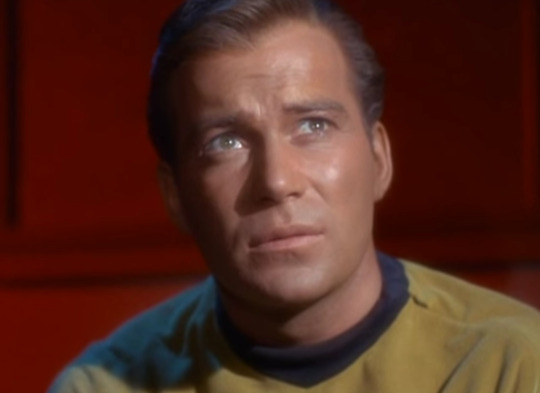

Jim's doubting himself and is dealing with a lot of stress because of all his responsibilities and the burden of making decisions, and asks Bones, "What if I'm wrong?" This is an incredibly vulnerable moment for Jim, who always has to be strong, and when Bones starts to answer, Jim gets up and says "I wasn't really expecting an answer."
Bones immediately puts his hand on his shoulder, stops him, and says, "Well, I've got one." Completely unexpected by Jim. Bones starts off by saying "This isn't something I'd usually tell a customer," then gives the speech we all probably know, about how there are millions of possible earth-like planets, "but in all of that, and possibly more, only one of each of us. Don't destroy the one named Kirk."
Let's break down why this is so good. First, Bones lets Jim know that he sees how vulnerable Jim is being and that he's talking to Jim as a friend. He recognizes that Jim's identity is fundamentally tied to his role as a captain, and also acknowledges how deep Jim's doubts are going, and at the same time reminds Jim that he is the one in control of himself (something very grounding for Jim) and he is not alone (because Bones is supporting him). Most of all, he doesn't dwell on the vulnerability Jim's expressing, but encourages him to take action, which is Jim's natural bent. He perfectly adapts to how Jim functions and knows what to say to get him back into a place where he can do what he does best: lead.
The Ultimate Computer

Jim has been been feeling insecure and threatened this entire episode, because a computer may take away his role as captain. Twice he seeks out Bones for comfort. First, he tells him that he has concerns about the computer, but worries about his motives. "You have my psychological profiles; am I afraid? Of losing my job? ...Daystrom's right, I could do a lot of other things. Am I afraid of losing the power, the prestige? Am I that petty?"
Bones replies, "Jim, if you're self-aware enough to ask that question, you don't need me to answer it for you. Why don't you ask James T. Kirk? He's a pretty honest guy."
Breakdown: Bones responds beautifully by once again reminding Jim that he knows himself and is in control. That sense of confidence is all Jim is after. He also establishes earlier in the conversation that what Jim is feeling is not unusual and can be understood. Brilliant.

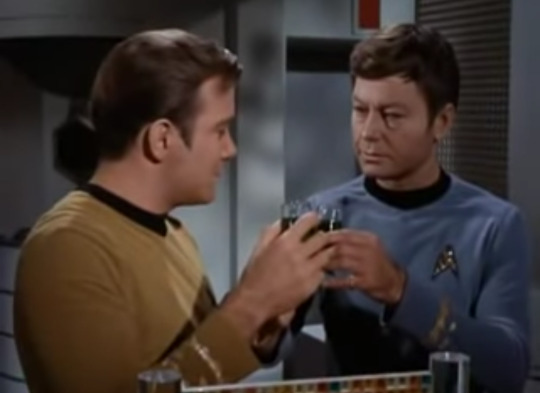
The second time Jim reaches out to Bones (this episode is my favorite for a reason), he's doubting his role even more intensely, having just been blatantly insulted and called useless (affirming his insecurities). He left the bridge, silently, by himself, and even Spock didn't follow him out. Bones knew he needed help and went to him, with some drinks (Jim initially responds that he's not interested in eating--coping by losing interest in food) and a joke and light-hearted attitude, so that Jim can feel comfortable expressing himself. Jim puts on an air of not caring (shutting himself off from his emotions) and says he's never felt so useless, and makes a cynical joke as a toast, "To Captain Dunsel" (the insult from earlier, meaning "unnecessary").
Bones stops him, looks him in the eye, and says "To James Kirk, Captain of the Enterprise." Jim says softly, "Thank you, Doctor," and when he downs his glass, Bones follows suit.
There's just so much good about this. Bones seeks him out even when he was trying to isolate himself because he knew Jim tends to distract himself and unhealthily repress things. And he doesn't let Jim get away with being blasé about how he's been hurt, but he doesn't force him to be honest either; instead, he lets Jim know he sees how he's feeling and how deeply he's hurt, and also reaffirms that Bones still cares about, respects, and most of all, believes in him. When Jim starts talking after the drink, Bones just listens and lets him talk, and when Jim responds to the call to the bridge, he follows him out. Back in action, and another job well done.
The Trouble With Tribbles

Just a brief point with this: Spock is just being silent here, which is typical for him. But Bones asks him "What's the matter, Spock?" seemingly out of the blue. Spock responds with, "There's something disquieting about these creatures," which means that he was feeling off, and Bones picked up on it. Bones then makes a joke ("Don't tell me you've got a feeling!") which lets Spock know that Bones sees what he's saying but isn't treating it as unusual (since the joking between them is their normal behavior). And when Spock continues talking, he hears him out (although it eventually degenerates into their typical spat).
All Our Yesterdays

Spock has begun degenerating into a pre-reformed-Vulcan version of himself. He gives up on trying to get back to their proper time and becomes irritable. Bones notices that something's wrong almost immediately.
He starts by asking about Jim (because he knows how deeply Spock cares for him), and Spock responds apathetically. This clearly shocks Bones, who then says "I don't believe it, Spock. It's just not like you to give up trying." When Spock doesn't acknowledge something's off, Bones presses him: "I understand. I never thought I'd see it, but I understand. You want to stay here. In fact, you're highly motivated to stay in this forsaken waste!" Spock deflects again, and Bones keeps pressing, which leads to Spock grabbing him by the neck and saying angrily, "I don't like that. I don't think I ever did, and now I'm sure." Bones simply looks him in the eye and asks calmly, "What's happening to you, Spock?"
Instead of hassling Spock about why he isn't doing more, he focuses on what's wrong with Spock himself, and he clearly has a deep understanding of who Spock really is. He starts by trying to get a feel for Spock's emotional state by going to ground 0: Jim. And he doesn't back down when Spock tries to blow him off.

Seeing that he's getting nowhere, Bones bides his time, and then starts something with Zarabeth, knowing Spock will jump to her defense.
When Spock pins him against the wall, Bones calmly says, "Are you trying to kill me, Spock? Is that what you really want? Think! What are you feeling? Rage, jealousy--have you ever had those feelings before?" Spock is clearly affected by this, and says it's impossible, since he's a Vulcan. Bones sees his opening, saying "The Vulcan you knew won't exist for another 5000 years! Think, man! What's happening on your planet right now, at this very moment?" Spock answers with the facts, and Bones tells him flat-out what's going on: he's reverting. Spock falls quiet, and says, "I've lost myself. I do not know who I am."
Bones is specifically structuring his responses (both here and earlier) to cause Spock to evaluate himself--to think, which has always has grounded Spock. Bones indirectly (so that Spock doesn't feel as threatened by the accusation) indicates that Spock's being too emotional. He wants Spock to see for himself that something's wrong, so Bones asks questions or makes open-ended statements so that Spock will have to respond. He also provides enough evidence (pointing out the emotions Spock is feeling) to prove he has a point and guide Spock towards a conclusion. He's talking Spock through it, using reason and logic, which Spock has always responded to. Bones' questions are also phrased so that the answers are objective facts--he's bringing Spock back to the verifiable, Spock's comfort zone. Finally, he does the analysis for Spock, telling him what's undeniably happening, but leaves the course of action open to Spock, so that he can regain control of himself by deciding how to proceed. Bones smoothly and logically guided Spock to the delicate realization he needed to have.
Of Bread and Circuses

Then of course we have this iconic exchange. Jim's been separated from the both of them and they are all in danger. Spock is pulling at the bars although he knows it will be futile.
Bones calls him out on this, and then thanks him for saving his life. When Spock brushes him off and keeps his walls up, Bones says, "I know why you're not afraid to die, Spock. You're more afraid of living. Every day you stay alive is just one more day you might slip--and let your human half peek out." Spock is silent and looks away, and Bones continues, now smiling slightly: "That's it, isn't it? Insecurity. Why, you wouldn't know what to do with a genuine, warm, decent feeling." His face makes it clear he's gently baiting Spock, who then looks back at Bones and says, "Really, Doctor?" Bones replies softly, "I know. I'm worried about Jim, too."
First thing: Spock's theme starts playing when Bones corners him. So we're supposed to get that Bones is really laying him bare. But starting from the beginning of the scene, Bones recognizes Spock's anxiety through his illogical behavior. He takes the time to thank Spock for saving his life, in an effort to remind Spock that he is competent and in control--basically, trying to calm Spock down and reassure him. When Spock refuses to deal with his emotions productively, Bones is having none of it, and shows Spock just how much he knows. He can tell Spock isn't worried for himself ("you're not afraid to die") but also is well aware of Spock's actual fears (which are coloring his current behavior towards Bones). Basically, Bones is saying, "this facade of yours can't keep me out. You're understood. You're not alone." Saying it in those terms, though, would just make Spock feel weak for unsuccessfully trying to mask his behavior, so Bones frames it as a gentle challenge. When Spock looks away, he can tell he's hit the nail on the head, and he smiles because he's getting through to him. His face as he says "you wouldn't know what to do with a genuine, warm, decent feeling" telegraphs to the audience that he's not actually serious, but is looking for a response. And he gets it--Spock acknowledges, as Bones had intended, that he is currently dealing with emotions. And that's where Bones wanted to get him, because now that he's admitted it, he can move forward; but Bones doesn't want this admission to go unrewarded, and definitely doesn't want Spock to go on believing that Bones meant what he'd said about not knowing what to do with feelings, so he again tells Spock that he understands what's really going on, but without challenge this time. He just accepts it and reassures Spock that he's not alone: "I know. I'm worried about Jim too." They're in it together, and now that Spock is a little more vulnerable, he's able to see that Bones is right beside him.
So that was a lot, but there is definitely even more. Basically, give Bones the appreciation he deserves, because his emotional intuition is off the charts. (After all, as he is so fond of reminding us, he is a doctor!)
#star trek#star trek tos#spock#jim kirk#bones mccoy#bones#meta#my meta posts#quality meta seal of approval#photoset#kay can i just catch my breath for a second#kay watches tos#1k#this post will be quiet for a while and then suddenly pick up like 200 notes at a time and it makes me really happy to see 😂😂
1K notes
·
View notes
Text
The Case for Guizhong’s Reincarnation
There’s been a theory floating around, especially on Twitter, that seems to have touched the subreddit but not actually been explained as far as I can tell so I’m going to make a mini dissertation fully explaining it since there seems to be enough evidence at this point that it totally might be real. Quick disclaimer: there’s 1.1 AND 1.2 spoilers in this post. The 1.2 spoilers are actually just Zhongli’s voice lines so nothing huge.
Ninggunag is Guizhong’s reincarnation. If you’re not very familiar with Guizhong and only kinda remember her from this quest someone was wonderful enough to compile info on her here. So, now that we’re all caught up I’m just going to dive straight into the insane amount of “coincidences” that tie Ninggunag to Guizhong.
1. Glaze Lilies: Glaze Lilies were in bloom when Zhongli first met Guizhong and during their final parting. On top of that Zhongli says true wild glaze lilies were found in Dihua Marsh and Guili Plains. The glaze lilies we see in Qingce Village and Liyue are “domesticated”. So there’s really no way around not associating Guizhong with glaze lilies. Ningguang is also associated with glaze lilies because they are her ascension materials as well as the fact that she goes on about how lovely and expensive they are in a voice line as well, in fact she’s the one who tells us in that same voice line that Yujing Terrace (in Liyue) are where they’re grown.
2. Memory of Dust: Another thing glaze lilies are used as an ascension material for is the Memory of Dust catalyst weapon. This weapon was a gift from Guizhong to Zhongli and is a puzzle he’s been unable to solve confirming the association to Guizhong again. Also Dust= Guizhong, goddess of dust. It’s also one of the very few catalyst weapons in the game that mesh perfectly with Ningguang’s talent kit. In fact its passive talent is completely worthless on anyone but Ningguang as she’s the only catalyst user who creates shields. The lines. I’ve connected them.
3. Ideologies: Guizhong has been characteristically kind and deeply understanding of humans and human motives. Her priorities where nurturing her people and bridging the gap in the strength of adepti and humans through wisdom and knowledge. She also gave commandments to her people. At first glance Ningguang seems to be none of these things but her character stories show that she actually goes down and plays with children and values their opinions on the happenings of Liyue so much that she uses them as her “intelligence network.” She also simply enjoys their company, showing that she is not the cold hearted businesswoman people make her out to be. Additionally Ningguang’s character story tells us that she’s always been kind and friendly to her common people and only treats business owners with her ruthless mentalities. Her love of rules is also not be noted. I’ll admit this one is shaky on it’s own but it’s there.
4. Engineering: Stone Tablet Compilations (I) confirms that Guizhong built Guizhong ballista to defend the people of Liyue and Cloud Retainer says herself that she helped. Cloud Retainer also complains about a certain human who ALSO is a renowned engineer and has a floating abode. She whines and jealously builds her adepti’s abode just to show off how much better adepti ingenuity is, but in reality we’ve seen both and hands down Jade Chamber wins Ningguang 1 Cloud Retainer 0. What I’m getting at is both Guizhong and Ningguang have “adepti level” mechanical engineering prowess to the point that even Cloud Retainer even has to acknowledge them. It should also be noted that both the Guizhong Ballista originally made to protect Liyue and ultimately the Jade Palace were what killed Osial.
5. Mora Meat: Okay, I’m gonna look crazy. But you obtain the Mora Meat recipe during the Cloud retainer quest where you need to serve Matsutake Meat Rolls, Mora Meat, and Jewelry Soup to a table where Cloud Retainer, Morax, and Guizhong would sit and eat. We know the Jewelry Soup is for Cloud Retainer so the Mora Meat is either Guizhong or Morax’s plate BUT Ningguang’s specialty dish is Caelum Terra Mora Meat (meaning Heavenly/Heavenly Ground Mora Meat). Again. The lines. I’ve connected them.
6. Hair: This might be the most damning evidence and quite frankly when I noticed it in game it made me go from “yeah thats a cute theory” to losing my mind for a week and writing this long ass post. We all know one of the many big tip offs of Zhongli being Morax was his ombre hair. No other characters but the archons thus far have this ombre hair EXCEPT ONE. Yes, Ningguang has ombre hair, her hair is white then turns to this gray...ashy...some would say dusty....shade. I’ve checked this over three times. In game the only characters who have ombre hair are archons. In all promotional art this is the same. Even among the upcoming characters only Xiao and Xinyan have colored hair but with Xinyan it’s notably NOT ombre and instead these streaks in her hair that quite frankly looks like she tied red ribbon into her braid for color and dyed the tips orange for a fire aesthetic. It looks totally different from how adepti and archons have their hair BUT what do I know. Xiao...is an adepti. Of course he has ombre.
6. Lore Implications: All of those things are nice and cool and all but the real reason I’m so obsessed with this theory is how well it ties into the Liyue plot. If Ningguang really is Guizhong’s reincarnation there is no shot in hell Zhongli has not noticed. In Zhongli’s leaked voice lines he refers to Ningguang in an incredibly fond and somber tone calling her a “rare gem”. He even very cryptically says “Time is cruel to humans.” Look. Come on.
More importantly, you have to consider that the people of Liyue were originally Guizhong’s people and Morax came to rule them with her before sending them south after she died to protect them. For Zhongli to retire NOW in the era when Ningguang reigns and she bears this heavy resemblance to his deceased friend would be a plot masterpiece. FINALLY Zhongli can return the people of Liyue to their original ruler and rest, FINALLY Zhongli can take the time to learn what Guizhong was trying to teach him about humanity by taking a break and embracing humanity, and more importantly FINALLY was Guizhong’s will realized and the gap between humans and adepti bridged. The jade palace, a construction of human intelligence and strength, dealt the killing blow to Osial NOT the Ballista. I cannot stress how impactful and amazing this subtle theming is. If this is never outright confirmed in canon I’d be fine with it as just a theory but I will eat my shoes if its outright debunked.
TLDR Ningguang and Guizhong share a lot of motifs and character traits to a point where it's too much not to mention or theorycraft also it just makes sense plotwise.
268 notes
·
View notes
Text
'Loki' Full Season 1 Review: The Most Frustrating Thing Is How Incomplete the Story Feels
Editor's note: The following contains spoilers through the Season 1 finale of Loki, "For All Time. Always."
[TWH-NEWS note: Tom is NOT confirmed to be on Doctor Strange in the Multiverse of Madness even though the article so claims. Marvel hasn't confirmed it.]
The Loki season finale is perhaps one of the most vexing episodes of television I have seen in quite some time. The Disney+ sci-fi drama, tracking the events following Loki's (Tom Hiddleston) escape from the pre-established timeline, was never confirmed to be an ongoing show versus a limited series, with rumors of a second season on the horizon from the beginning, so the biggest twist delivered by "For All Time. Always." ended up being confirmation of a Season 2 with a post-credits title card.
However, while there were other key reveals made during the episode, those reveals left behind plenty of story to explore in future seasons. Too much story. There's a difference between a few dangling plot threads and a mess of string, and the staggering number of questions left unresolved by "For All Time. Always." crosses a line when it comes to completion — especially given the fact that there's no clear sense of when the show might return, and the real story being told is much bigger than the fate of one mischievous scamp.
In general, every episode of this show was beautifully made, with immense credit going to director Kate Herron, head writer Michael Waldron, and the creative team. The cast of known all-stars like Tom Hiddleston, Owen Wilson, and Gugu Mbatha-Raw, blended with new all-stars like Sophia Di Martino and Wunmi Mosaku, did a remarkable job of grounding even the most fantastical moments in raw humanity, and the writing popped with verve and wit. Also, Loki does come full circle on what was its original raison d'etre — the redemption of a character who literally was plucked out of the timeline at his worst, having attacked Manhattan with an alien force so destructive that the Earth needed a whole damn team of superheroes to stop him. On this score, the show was wildly successful, breaking down Loki's sense of grandeur and purpose in the first episode and then slowly but surely rebuilding him into a man capable of evolving beyond his past. Loki did more to examine a single character's psychology and motivations than we've ever seen in the context of the MCU, and all of the progress and growth made by the character, as a result, feels truly earned.

However, if Loki's redemption was the only thing this show had been about, it would have been a very boring show, and Loki was far from boring. The official theme of the series was "What makes a Loki a Loki?" but the real issues being raised were far more existential; in so many ways, this was a show about faith and free will, an undercurrent that deserves more exploration and frankly appreciation, especially after the questions and themes left dangling by the last episode.
This element proved to be key to so much of the show's construction, especially when it comes to the TVA, which basically functions as a religious order — its devotees slavishly sacrificing their lives to the cause of protecting the Sacred Timeline. It's not subtle, especially when the dark side of it is revealed, those devotees learning that their service happened against their will. "We can't take away people's free will, can't you see that?" Mobius pleads with Ravonna in their final scene together, before she walks away in something resembling agreement with him, telling him that she's going in search of free will herself.
Loki Season 1, by the end, becomes a show not just about a crisis of faith, but about an apocalypse. Every time a story about apocalypses comes up, I find it impossible to forget that the Greek word from which the term originates actually means "revelation." That's why the part of the Bible about the world ending is called the Book of Revelations, but beyond that, the definition serves as a reminder of why endings can matter. Endings are beginnings, in some ways. A painful breakup reveals the flaws in what might have seemed like a loving relationship. Extreme climate change is a revelation regarding humanity's callous attitude towards its impact on the environment. For the characters of Loki — perhaps the entire MCU — the apocalypse they're facing following the destruction of the Sacred Timeline also means the revelation of what lives they left behind.
Certainly there's a ton of room for speculation as to what lies ahead for these characters, but the fact is that the next chapter of Loki's journey won't even be told on Disney+, as Hiddleston is reportedly in Doctor Strange in the Multiverse of Madness, and there's no telling when we might return to resolve the events of the Season 1 finale. Cliffhangers are one thing; anyone who grew up watching '90s TV learned the hard way how to handle the dramatic season endings of The X-Files or Star Trek: The Next Generation. But Loki didn't dangle its characters off a cliff — it pushed them off the edge, leaving them suspended in mid-air for who knows how long.
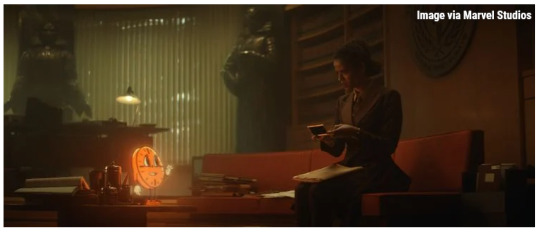
Back in the days of The X-Files you at least knew that whatever jaw-dropping cliffhanger the season finale had just delivered would be addressed by the season premiere in just a few months. (Maybe as many as six months, depending on the baseball season.) That's a sense of certainty that Loki fans do not have the luxury of enjoying; based on where the conversations around a second season currently stand, it could be a while before the contracts are even signed. Conservatively, at this point, it feels unlikely that we'll get a second season of Loki until near the end of 2022, and given that the first season took over two years from its announcement to now to actually debut, 2023 doesn't feel like too much of a stretch. Maybe Owen Wilson and Gugu Mbatha-Raw get to make cameos in Doctor Strange 2 as well? Nothing is possible and everything is possible. We just have to wait for the answer, and in the meantime stew in dissatisfaction.
"Only one person gets free will. The one in charge," Ravonna tells Mobius — implicitly referring to He Who Remains (Jonathan Majors). Who, speaking of, is now dead, Sylvie having completed her one primary quest to revenge herself upon the ones who took her life away. That, combined with the Wizard of Oz parallels, makes this a show that's fascinating to parse (Sylvie literally killed God!), but frustratingly incomplete in its themes. Literally as the episode officially ended on the visage of Kang enshrined as the ruler of the TVA, I said out loud "Well, there's going to be a Season 2," and I suppose that thanks are owed to Marvel and Disney+ for not leaving that element in suspence for more than two minutes and two seconds.
But if I have a religion, it's my belief in the power of storytelling, how the myths we create for ourselves and others can shape lives and hopefully make them better. One tenet of that is the idea that great stories deserve some sense of completion. So, the first season of Loki committed a pretty grievous sin.
#There's no confirmation on Tom being in the next Doctor Strange film!!!#loki#loki series#review#article#collider#loki spoilers#spoilers#loki series spoilers
48 notes
·
View notes
Text

WHATTHEFUCK WANDAVISION EPISODE 5
SPOILERS AHEAD, YOU’VE BEEN WARNED
GIFS AREN’T MINE
EPISODE 4 THOUGHTS
opening title | right off the bat, the paintbrush is surrounded by wanda’s powers. this adds to the assumption that wanda is the mastermind behind all that is happening with westview. could mean nothing but i just find that little detail interesting. also, in the recap, in the quick moment in episode 3, we see another variation of the scene when vision asks wanda where geraldine went. she says “she’s gone. she didn’t belong here.” i feel like in recaps to come, we’ll see slight variations of past scenes to indicate that the reality in westview is breaking or just to show the actual words exchanged during the altered scene. wanda is the one broadcasting and chooses what audiences can and cannot see so maybe this is the original cut of the scene that we nor SWORD saw in the broadcast.
agnes | first off, agnes breaks character for a second like an actress who screws up and so everyone has to do a retake. when she says to wanda that she wants her to hold the kids, wanda is even confused for a second. she looks to her like she’s the one in charge. i think she did this on purpose since vision went off script as well in not letting agnes hold the boys. even though there’s footage in the 90s episode that she’s also being controlled by wanda when vision pulls her out of the trance, i still think she’s working with the main bad guy to hurt wanda. she doesn’t seem to react when the boys age up twice in front of her, always making a witty and funny comment.
wanda’s a terrorist | the way hayward quickly labeled wanda as a terrorist makes me think that there’s ulterior motives with this dude. didn’t want to believe it but marvel has put me in a habit of assuming guys in suits have sinister agendas. while jimmy woo gives a brief rundown of wanda’s life, hayward is quick to focus on the negative aspect because she’s a criminal with the sokovia accords still in place. he seems to be the only one driving this idea forward just because he’s the acting director of SWORD. he even put a damn missile on the retro drone monica controlled to get inside the anomaly. as acting director, he would know that a missile is useless against an avenger with wanda’s powers. i believe that he knew that missile wouldn’t do anything to wanda and the sole purpose was to antagonize her to continue painting her as the sole mastermind behind westview. i think he’s just trying to shift the blame from SWORD to wanda now that she possesses the body that can be used to create more weapons etc. etc.
vision’s body | so that scene we saw in the sneak peek was indeed footage of wanda stealing vision’s body and that SWORD was in possession of it. with monica saying in the previous episode that SWORD doesn’t do creation and hayward saying they’re focusing on robotics etc., it makes SWORD also v hypocritical because the brief footage we see of him - he’s dismembered. it doesn’t take much to assume that SWORD was most likely using vision’s body towards their robotics, nanotech and AI projects.
lagos commercial | clearly this is in reference to wanda’s accidental killing of innocent lives after trying to protect steve from crossbones in civil war. the saying “for when you make a mess you didn’t mean to” at the end makes me disagree more on haydick hayward’s assumption that she’s a terrorist. i like how they used this as a paper towel commercial as after lagos, the sokovia accords were written. for me, the paper towel represents the actual accords since they’re drafted on paper, right? how do we clean up any mess in the real world? with laws and regulations being written and enforced aka a piece of paper.
norm’s moment of consciousness | norm is granted a moment of consciousness by vision and is quickly hysterical. his statements about how vision has to stop and get her out of his head has me split. on one hand, he could be talking about wanda since monica said the same thing in her recounting of the events in the anomaly. but i also think it���s agnes or someone else who’s just disguising themselves as wanda (her emotions, grief, etc) to get everyone to see wanda as the bad guy (again).
SWORD computer message | how was the westview reality able to see this message by SWORD? it didn’t have much detail and only the basic rundown of what was going on but it’s interesting to see that message be ‘intercepted’ by the hex. we didn’t see from the outside that they were trying to communicate with wanda or someone within the town. it was also weird how the whole staff read it together at once - very creepy and raises more questions than answers.
“you can fix the dead” | tommy’s comment to wanda when sparky passes away. clearly the only dead one is vision in wanda’s world even though he appears very much alive in westview. i don’t think even wanda knows the true extent of her powers if she is the main perpetrator in all of this. i’ve also seen people mention that maybe the death of sparky is meant to push wanda to unlock that power if she has the ability to bring back the dead.
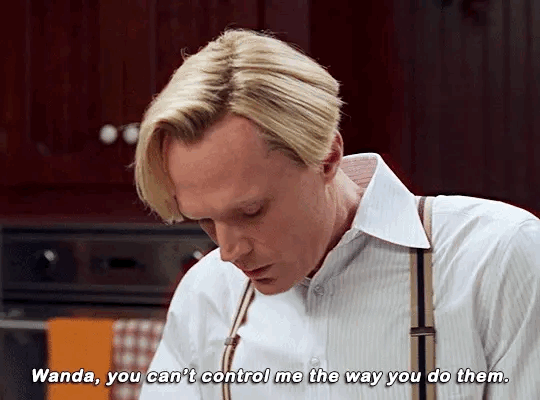
wanda and vision arguing | from the get go, we’re seeing vision going off script because he’s piecing things together. he notices how agnes always comes in to save the day or with something the couple needs. i like that we’re seeing the pair fight because they haven’t been on the same page arguably since episode 3 which was the last time we saw wanda edit an episode.
“you’ve never talked to me like this before” | wanda to vision. as i’ve said before, the show is really making vision seem more of the human one of the couple even being supposedly dead. what wanda says is true, we’ve never seen vision so much as raise his voice at wanda. in the past, before westview, vision always tread lightly around wanda and thought about how to word news of something she may not react well to. he’s always been calculating and thoughtful in his approach to wanda. even when she shoved him down however deep into the ground to leave the avengers facility in civil war, vision didn’t yell at her when they fought. it’s been nothing but love that vision has communicated to wanda. now with his clear frustration of the situation and evidence, it’s understandable that he’s yelling at her. it’s human to assume and jump to the worst conclusion about someone. he’s becoming more human in being upset and frustrated with someone he cares for that looks like the bad guy and victimizer of a whole town and seemingly controlling him and making decisions for him. i really hope he doesn’t get killed off at the end because i’m truly loving vision’s growth and range throughout the series.
“i can’t remember my life before westview” | this speaks to vision’s physical state. i think he’s not fully dead but because he doesn’t have the mind stone. every iteration we’ve seen of vision in the mcu has been with the stone since 2015. he doesn’t remember his creation or his death in 2018. the last 8 years are a blank for vision and understandably so, he’s upset and frustrated at the situation and at wanda. maybe it’s because he’s in the hex and maybe once outside, he’ll remember or somehow recount what’s happened? again, i hope he doesn’t just die once he gets out of the hex.

pietro’s ‘recast’ | the most shocking part of this episode that made me choke on my water and feel 50 different emotions in a matter of seconds. anyways, i think wanda damn well knows that it isn’t the brother she lost. i think she pieces it together that he is pietro but just not her world’s pietro like she feels some sort of connection to this pietro (if that makes any sense)? love that this brings in the multiverse into the mcu. i am still was holding my breath for aaron taylor-johnson but seeing evan peters’ peter was a fun surprise. in rewatching, the episode sets this surprise cameo up with billy and tommy asking her about pietro and this reoccurring theme that ‘family is forever’. i think that either wanda doesn’t realize her powers and her life in westview is bringing in people from other universes or that whoever is behind all of this is giving wanda one more reason to stay in westview since vision is starting to go off script and can’t be controlled by wanda anymore.
long lost bro | the fact he says this makes me curious as to whether this truly is peter from the x-men universe or if whoever is orchestrating this is just using peter’s body to manipulate wanda and play along in her ‘show’. if it’s truly peter that’s been plucked from the x-men universe, maybe he’s given this knowledge or whoever is controlling him is planting that information in his brain so he can say that he’s wanda’s long lost brother which he technically is. there’s also been people pointing out that in the mirror behind wanda looks distorted when you look, you would be able to see peter and wanda’s in the reflection. it looks unreal and this could be a key to seeing the reality of what’s happening in westview, maybe hopefully this’ll be a key to opening wanda’s eyes that something clearly isn’t right.
#wandavision#wandavision spoilers#scar’s theories#wanda maximoff#vision#pietro maximoff#peter maximoff#scar tries to piece together what she can each week#what the fuck#marvel#mcu
101 notes
·
View notes
Text
okay current trc dragon age au concepts
so in my mind this is like a dao au. like the basic plot of origins is happening but raven cycle characters. so like ok:
- gansey: human sword and shield warrior. also, the warden. like specifically as in: you, the player character, the hero of ferelden. it’s because he’s the leader who brings the whole group together, but also the themes of this being your second chance at life only to realize this path was also just supposed to lead you to your death. anyway i imagine him having a human noble background with a storyline that mirrors the story of how he first died in trc: he strays off the grounds of his family castle during a party, only in this instead of being stung by bees, he gets attacked by the darkspawn that are emerging because of the coming blight and gets the taint. luckily duncan (or whoever is replacing duncan in this idk agkljhaga) is there and reveals that he can survive if he becomes a grey warden
- henry: human rogue archer (i THINK...). ok so in my mind henry ends up getting the alistair role in this of being the other recently joined gray warden who survives ostagar. not 100% set on why he joins the wardens, though i’m imagining his family is nobility but with some questionable ties to illegal magical artifacts trades (maybe between tevinter and various circles?). so the kidnapping situation still plays out perhaps with him just being older and i can see duncan (i’ll be real i really am just imaging duncan among all the trc characters LMAO) or maybe other wardens in general ending up helping him and henry deciding he’s Done With This Shit and wanting to join up with a group doing something good. anyhow him and gansey survive ostagar the last living grey wardens, when they meet
- ronan: human mage. in this au ronan is very much the morrigan equivalent which is sooo funny to me. he’s an apostate raised by his apostate father (who got wealthy by being a fence for the aforementioned illegal magical artifact trade) and after niall dies things go south in the lynch family so fast (declan is trying to work to protect his family from being caught by templars but also like being an asshole about it. ronan doesnt get it at all, maybe thinks declan is planning on turning him in TO the circle) either way ronan just leaves to strike out on his own, ends up saving two grey wardens in the korcari wilds, and proceeds to help them recover while negging them. ends up teaming up with them because gansey just has that effect on people, and also saving the world sounds like a good goal
- blue: elven dual wielding warrior. i really like the idea of her family being dalish elves! maura is a mage and their clan’s keeper, and blue hates that because she’s not a mage, she’s not able to be part of that that world and that part of their culture in the same way her mother is. i really like the idea of her finding an eluvian a la merrill and also being dedicated to restoring it, but in this case it’s motivated by her wanting to prove herself to her family (also, mirror magic!). when the boys meet with the dalish about the treaties, blue ends up joining their party intially because she wants to come with them to the circle of magi to do more research and hopefully find some answers
- noah: human dual wielding rogue. he’s just cole....... that is all we need to know. i’m not sure how noah enters the story (i think he probably ends up showing up in a random encounter, maybe helps them with some bad guys and is super... Off but very sweet and asks to tag along) but eventually as we unravel his backstory, we learn that the original noah and whelk were circle apprentices seven years ago who were fooling around with blood magic. whelk got illusions of power and tried to summon a demon and sacrificed noah in the process, but instead summoned a spirit who ended up taking noah’s form just like cole, not quite sure what happened to him or who he was yet. (meanwhile whelk stays in the circle and ends up being the uldred equivalent during the circle quest)
- adam: elven mage. adam grew up in an alienage until he was around 11 or 12 and began to first show signs of magic and was taken to the circle. i think he has complicated feelings about the circle, because on one hand, he knows what the problems with it are, but he also can’t help but feel like being taken to the circle saved him and agrees with the need for it to exist. him and ronan fight endlessly about this. either way, he is interested in at least a temporary ticket out and after helping them at the circle, he gets permission to join their party to help out. i also really like the idea of them eventually going back to blue’s clan for a bit, and him being taught old elven magic from persephone :)
and that’s it that’s the party! in my brain this IS a video game and you get to romance everyone as gansey. if you don’t romance adam he can get together with either ronan or blue depending on if you’re romancing one of them and if you’re not romancing either you get a dialogue that pushes him in one direction or another. if adam/blue happens they break up but if adam/ronan happens they’re still together in the endgame :^)
19 notes
·
View notes
Text
Studio Ghibli; and the aesthetic of comfort and the mundane.
When it comes to animation movies, Studio Ghibli movies are still some of the long standing staples of the genre, and for a good reason. A lot has been said about these films, their thematics, their characters, their stories and the studio that made them, as well as one of their elusive and yet most well known creators : Hayao Miyazaki. I will try to focus on the ways Studio Ghibli views comfort as well the coziness in these little slower moments that fill the universe of Ghibli films. These movies are generally universally loved by the public, despite the fact that they are aimed toward a younger audience. These movies are definitely created with the goal of showing it to a public of children and families, and yet they still are very complex and layered pieces of art and animation that all audiences can appreciate. These movies also do not look down on their audiences, they do not shy away from touching upon more difficult themes such as war, loss, and fear, in a manner that’s adequate for the public it is targeting. With this article, I want to write an extension on the article I have already written on the subject of slowness in cinema and that has been asked by one of my subscribers on patreon. If you haven’t read that article yet, you can read it HERE on my blog.
The films that have been created by Studio Ghibli, are, and with reason, a cornerstone of the animated movie industry. Despite the fact that these movies are definitely intended and made for a younger audience, I think we can all agree that these particular movies can be appreciated by everyone, at any age, and that anyone can find meaning and solace within these movies. Studio Ghibli movies are truly an excellent example of filmmaking that manages to capture a slower pace in media, slowing down the action to just offer a moment to breathe. Between all of the grand adventures and events that are happening in those movies, there are always moments of slowness to be found. Of calm. Of quietness. The characters of the Ghibli universe are permitted to simply exist sometimes.

The concept of slowing down in media is one that I deeply appreciate for the way it brings depth and serenity in stories. This is a very personal point of view of course, I find the modern pace of capitalist life deeply alienating at times, and sometimes I think we just need a moment to slow down and enjoy simply being. Doing nothing is a very anti-capitalist thing, in my opinion, and I greatly appreciate seeing this concept in books and movies. While being productive is always a nice feeling, and god knows I always enjoy being busy and having things to do, it is always in these moments where I feel submerged by everything I have to do that I yearn for some peace and quiet. While it is not always possible to have this, it is always possible for me to simply … start a movie, and try to escape a bit the weight of the world.
I personally think having these moments to be able to just breathe and be truly enriches a movie. Those moments of simple mundanity and ordinariness ground the story in reality even when the story is about a wizard living in a moving castle. Studio Ghibli movies are the epitome of films that can focus on fantasy and the imaginary and telling incredibly original stories, while also including this measure of the mundane, the routine and the ordinary in between the louder and more action-packed parts of the film. This way of constructing these films, makes it so that the universe feels more lived-in, real and comforting, the characters feel more grounded and rooted in reality.
Studio Ghibli: a brief history
Even though Hayao Miyazaki started working as an animator in the 1960s, working in TOEI animation and learning the tricks of the trade, it is only later in 1985 that he established Studio Ghibli as we now know it, with the partnership of Isao Takahata and Toshio Suzuki. It is with that previous working experience that he got to truly construct an identity as the type of animator he wanted to become, and the type of movies he wanted to produce. Before Ghibli, Miyazaki got involved with different animation projects such as Heidi (1974) , and Anne of Green Gables (1979) and a project that would never see the day : Pippi Longstocking. This project is quite interesting in how it simply … never got made, its a bit like a lost part of history, a what-if. Despite the fact that Hayao Miyazaki had drawn a lot of concept arts as well as storyboards for this project, they never got the green light from the swedish author Astrid Lindgren.

Nonetheless, it is obvious how all of these projects forecast how Miyazaki and his business partner Isao Takahata will more often than not try to center young girls as the main protagonists of their movies. A trend that will continue on for the most of their careers to this day. They will continue to focus on young girls and women as the main characters of the stories they are telling in such a complex and intricate way, all of their female characters are different from each other, with their own complicated inner lives, dreams and goals. It seems like such a basic requirement to request from our media, and yet even now, it is still not something that… will be guaranteed in the stories we consume. It is not to say that ghibli’s portrayals of women is perfect, but I do appreciate their very complex heroines and their adventures.
I will not try to pretend that I can totally understand the type of person that Miyazaki is, he’s a complicated figure at the helm of Studio Ghibli, the man behind the curtain. He is definitely a hardworking and self-critical person, but also deeply critical of others as well, wanting to set up very high standards of work that can be extremely difficult to achieve in a very high pressure environment. Thus is the complex personality of Miyazaki. I do not want to pretend he is a perfect man, and I do think some of his choices are things i don't quite agree with. There are some very valid and legitimate criticisms to be made about him, some by the closest people he works with as well as his own sons, especially Goro Miyazaki, who say that his father was always very distant, working long hours even by the era’s standards, and whose heart was obviously more into his work than his home life. Hayao Miyazaki valued work and putting in the time and effort into his art and job, pushing for very unhealthy job practices and work culture.
He is far from perfect, and seek perfection in his work, both from himself and the people he works with. There’s a lot to be said on that aspect, and yet I still very much think that he is that he is still a very fascinating person to reckon with, someone who brought very important and beautiful stories and revolutionized the world of animation in a really significant way. The universes he created are some I keep coming back to times and times again. I also highly recommend the documentary A Kingdom of Dreams and Madness (2013) if you have not seen it, as to have a glimpse of the way this animation studio functions on a daily basis. I find it always so very inspiring personally, each time I watch this documentary, I feel hugely motivated to create and to make something, no matter how small. Sometimes, it is simple about the sheer act of creating something, of spending some time away on the roof, looking at the skies while a cat is sleeping next to you.
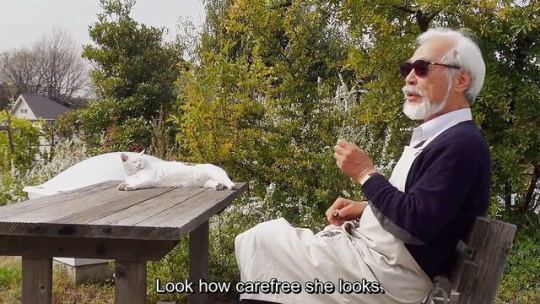
His involvement with the Union during his early animator years left him with a leftist tendency that will continue on during his career and seep through the themes of his movies.From the very firmly anti-war stances to the pro-environmentalist and anti-capitalist and anti-consumerist themes, Ghibli movies are a proof that you can tackle these subject matters in a very conscientious way even in children’s media. It can be seen in the movie Grave of the Fireflies (1988), a heart-wrenching movie about two children trying to survive the last months of World War II. Even though Isao Takahata, who directed this movie, says the movie was not made out to be an anti-war movie, this stance is still very much woven in the very fabric of the movie, from its beginning to its ending.
This specific theme is very important here in terms of the experience of the mundane and the ordinary in Ghibli movies. Even within the most devastating of events, smaller moments of slowness can be found, and appreciated. Quiet moments of peace that feel even more poignant in the midst of struggle. Despite everything, I think we have all come to the conclusion that even when world-shattering events are happening, life truly must go on. And it does find a way to go on, and it feels mind-boggling that we all have to do our groceries, cook dinner, wash our laundry while terrible events keep happening, and yet, these mundane moments still occur. It is still possible to find a moment of respite and peace in the midst of uncertain times and terrible events.
But also, as Marco says it in Porco Rosso, « I’d much rather be a pig than a fascist » and I think this really does say it all.
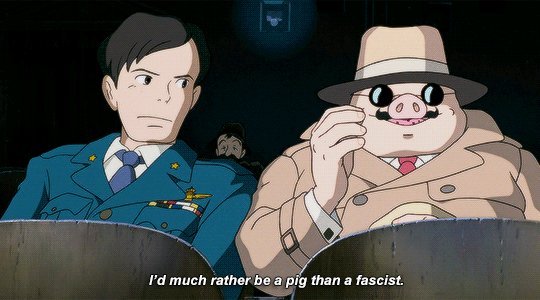
The aesthetic of comfort
Despite being usually an animated movie set in a very obviously fantastical universe, Studio Ghibli movies tend to be very realistic in the way they portray the characters, their complexity, and also what are the real underlying conflicts. For example, in Kiki’s Delivery Service (1989) «The primary conflict isn’t about magic—it’s internal and invisible and wholly human: Kiki’s brief period of lost motivation and artist’s block. She gets it back when she wants to help Tombo, whom she loves. Simple as that. She doesn’t have to wage an epic battle to prove her worth» The stakes might seem lower in this movie compared to other stories, very mundane and ordinary, there is no war, there is no significant conflict, but I think this is what makes it so special in the end.
One of the particularities of Ghibli movies is how they deal with the notion of childhood, a notion that few animation movies have approached with such delicateness and seriousness. One of the things I really appreciate from Ghibli movies is that it does not shy away from treating children as complex beings. It does acknowledge the fact that children are also able of complexities and of understanding more than we think they do, and yet creating media that is easy for them to comprehend and appreciate, which I think is no small feat.
There is definitely also a definite focus on working class characters instead of the more “prestigious” ones in Ghibli movies, there is a desire to center normal people, whatever that means, in their stories. Most of the characters have to work for a living, earn their lives, and the value of hard work is definitely something that is highlighted in the Ghibli universe. In Kiki’s Delivery Service (1989), the baker’s wife tells the young witch that work is work no matter how small and insignificant you might think it is, and all work should be paid, and it is a truth that should be remembered.
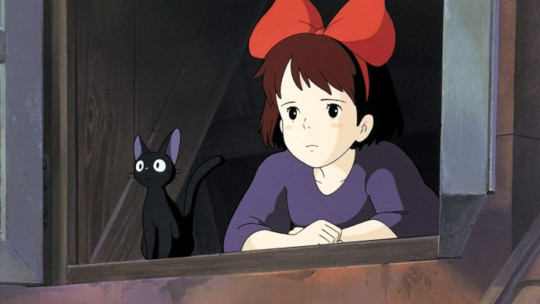
In that movie, here is no world shattering events, no wars or massive destruction, only a young witch trying to make something out of herself, losing her will and creativity and gaining it again. That particular theme is one that resonates a lot with people on a very basic level, especially in this current day and age where so many of us are trying to monetize our creative work. So often, trying to capitalize off a hobby and enduring the bone deep dreary weight of capitalism is what will make artists lose their original inspiration and will to create, when a hobby turns into labor, and this is, at its core, the journey that Kiki went through.
As Robert Ebert told Miyazaki, during an interview with him « I told Miyazaki I love the "gratuitous motion" in his films; instead of every movement being dictated by the story, sometimes people will just sit for a moment, or they will sigh, or look in a running stream, or do something extra, not to advance the story but only to give the sense of time and place and who they are.»
And he was right, Ghibli movies have these moments where the action is not something that is strictly essential to the plot of the movie, and yet it is essential to the essence of what Ghibli movies do. Miyazaki then explained what this concept for him meant for him :
«"We have a word for that in Japanese," he said. "It's called ma. Emptiness. It's there intentionally."»
Those slow moments between the actions are thus very deliberate, they mean to slow down the story and to slow down the pace. Unlike the generally accepted school of thought in modern Hollywood cinema, where every single scene and dialogue needs to move the story forward, Miyazaki lets his story and movies breathe and exist. This way of building a story does give it an added sense of calm and soothingness, but also it gives it a sense of realism. Instead of following a strict narrative outline, this fluidity makes the story feel more real and relatable.
These quiet moments and details that might seem innocuous and useless at first glance, and maybe look like they would slow and hinder the pace of the movie in itself, are ultimately what gives it this feeling of genuineness, of sincerity. It lets the characters as well as the plot have the space to breathe, evolve and grow.
« Although these scenes may seem slow or unimportant, they give space to develop the characters and to heighten dreams or feelings the characters are having such as feelings of isolation, wonder, or anxiety. It is in these moments of stillness that the audience can contemplate with the characters and feel what the characters are feeling. These moments remind the audience the importance of stillness in such a fast paced world and highlights the beauty of a slower paced life»
Studio Ghibli movies insert those slo
wer moments in between their more faster paced and action packed scenes, but also in the midst of world-changing events such as wars, as shown in Howl’s Moving Castle (2004). This demonstrates how people still live on during those crises, even with the danger looming over their heads. This kind of media gives me hope that we can live through this, that moments of happiness and peace are still to be found even within the madness of our very fast capitalistic and hyper consumerist life.
From visibly established routines to a focus on the mundane, the daily. the ordinary, Ghibli movies will definitely bring these seemingly unimportant acts and integrate them as essential to the general experience of the movie. You see the characters inhabiting the Ghibli universe working, studying, sleeping, eating, in a way, you see them being alive. In a manner of speaking, of course, these are fictional characters in fictional universes, but it is obvious that the universe and the lives these characters lead extend beyond what we’re seeing on the screen. They have whole lives and experiences that we might not be privy to, as the audience, but it is apparent that these characters are fully formed. They are going on and about with their lives, and it is this emphasis on the ordinary that makes them appear so realistic.
Falling and getting up again. Jumping and stumbling. So often, Ghibli’s characters are not perfectly graceful beacons of dexterity and elegance, quite the opposite even, their demeanor and posture will inform the character and their place in that world, and yet it is not always perfect and flawless. Sometimes, the characters will run and stumble and trip and fall and this mundanity of being.
This representation of the realness of what it is to be a person, that sometimes we trip and stumble, that we fall and get up again and yet, we continue to walk or run. It’s also a way of defining the different characters, of imbuing them with their own personality and mannerisms and be able to distinguish them even with such small details as the way they walk and carry themselves. This is definitely not exclusive to Studio Ghibli, animation as a whole uses movement and mannerisms as an essential tenet of character, but it is still very rare to see this sort of flailing included voluntarily in the films. Since the medium that these movies are created in is two-dimensional animation, it means that every single frame had to be carefully planned and executed, before being drawn and painted frame by frame. These movements could have been easily not included in the final cut of the movie, they could have been considered superfluous to the film, and yet they were. These imperfect moments are what ultimately makes it better.
Ghibli movies do that, not only in terms of physicality and concrete elements, but also when it comes to feelings and emotions. Emotions that we all feel and experience, from the feeling of restlessness to loss and fear, to love and courage. Ghibli movies really do showcase all of these feelings that we all feel, even though in a manner that is easy to understand for all audiences.
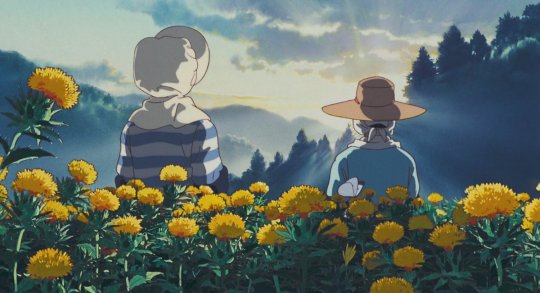
“Only Yesterday does not hit the dramatic highs of Miyazaki’s work, but that’s partly the point. It’s less concerned with presenting a grand thesis about the nature of being human than it is navigating the heartbreaks, triumphs and regrets that make us. But it’s still comforting for a film about the relentless march of time, the title even invoking both the speed with which childhood can pass us by and how close those memories stay with us.
It’s immensely relatable in how it evokes these little tragedies: the feeling of being a fraud; of missing out’ of wondering if you’ve left your childhood self behind; idealism; dreams and all. It asks us not to mourn what might or might not have happened, but to keep those memories close, and use them to move forward. That Only Yesterday makes this feel as wondrous as a castle in the sky or a land of spirits is nothing short of miraculous, and why it ranks among Ghibli’s best.”
The act of eating is one that is heavily emphasized in Ghibli movies, one only needs to read all of the articles dedicated to the mouth-watering food that fills its universe to understand that this simple act, of eating and of preparing food, is one that is very important. Countless of people have made videos on how to recreate some of the most iconic dishes and meals of the Ghibli universe, from Howl’s Moving Castle’s tempting breakfast to Spirited Away’s feasts, both the one that Chihiro’s parents eat at the beginning of the movie and the ones served to the bathhouse’s guests, and the simple snacks that are eaten throughout the movie, from the onigiri Haku gives Chihiro or the food she shares with Lin. Ghibli movies are very well known for how pretty and appealing its food looks, and simply taking the time to showcase the act of preparing and eating food, thus slowing down the pace and creating a break during the plot of the movie. There’s a certain type of media that does put a lot of importance on the act of slowing down, taking the time to cook, such movies such as Little Forest : Summer & Autumn and Little forest : winter and spring, for example. A lot of media that’s just about not doing much and preparing some food, which somehow has a very soothing effect. The act of eating and cooking is part of the greater character narrative and storyline when it comes to Ghibli movies, but also the act of sharing a meal and of eating together.
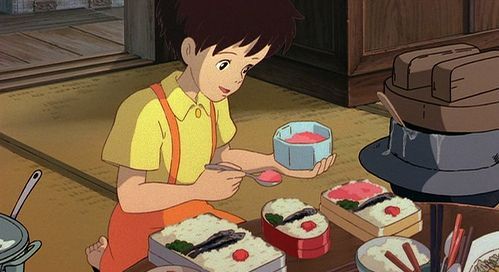
Food, the preparing of food as well as the sharing of a meal, is a love language in itself, in my very humble opinion, taking the time to prepare all of the ingredients and then a dish for someone else or for one self is an act of care. And it is definitely one of the ways it is used in Ghibli movies, from My Neighbor Totoro (1988) in which the eldest daughter is often seen having to prepare lunch and food for her younger sister and her father, since her mother is sick and hospitalized. I will not be talking here about eldest daughter syndrome here, but it is very much a Real Thing™️. It is simply in this representation of the act of cooking, and the care she puts in it, that we can understand not only the love she has for her younger sister and father, but also the very real responsibilities that she has to shoulder as such a young age.
In every single Studio Ghibli movie, this pattern appears, someone will make food, and it will be obvious how much time, effort and love it takes to prepare this dish, or someone will simply take a break from whatever they were doing and take a bite of a small but tasty snack. Somehow, the usage of food in the Ghibli universe is central to the way the characters will experience and move through the world.
It is in these small moments of respite and calm that the characters, and by extension, us, are allowed to breathe. Moments that are quiet, where two people will share a meal and just be. I always terribly appreciate whenever a movie, or any piece of media really, simply takes the time to let the story expand and move at its own pace. Studio Ghibli movies are always ones I love to go back to whenever the world feels overwhelming and slightly unbearable. I hope that we can all have more moments of peace and quiet, that things can slow down enough for us to catch our breath.

BIBLIOGRAPHY:
Hayao Miyazaki interview | Interviews
The Magic and Artistry of Studio Ghibli's Films
The Low-Stakes Pleasure of KIKI’S DELIVERY SERVICE
Wings and Freedom, Spirit and Self: How the Filmography of Hayao Miyazaki Subverts Nation Branding and Soft Power Shadow
Miyazaki’s Magical Food: An Ode to Anime’s Best Cooking Scenes
Food in Spirited Away: Consuming with Intent
Grave of the Fireflies: The haunting relevance of Studio Ghibli's darkest film
NAPIER, Susan. Miyazakiworld : a life in art. Yale University Press, 2018.
74 notes
·
View notes
Note
Hi, I absolutely adore your stuff!!! Its my birthday soon and I would be forever grateful if you could write me something for Zim? I dont really mind what it is or what it's about. I'd just be happy for cute headcannons. Thank youuuuuuu!!!!💞😘
Sure!! I finally got to this. I’ve been wanting to write some headcanons anyway, but I have a lot in my ask box so I just haven’t gotten to it yet. This is basically a list of various headcanons that are cute (in my opinion), they don’t really have a specifc theme!
Cute Zim relationship headcanons (all are my personal opinion)!!
Irkens are touch starved, since the entire empire is basically one big military. Love within Irken society is incredibly taboo, as is physical affection. Most forms of physical contact between Irkens tend to be painful (i.e punches, kicks, strikes). The whole concept of romantic relationships was a bit of a culture shock to Zim.
That being said, the very first time you had attempted something in that vein (even if it was something as simple as a hug or taking his hand), he wasn’t quite sure how to react. At first he was very jumpy. However, if you would pull away, he would immediately bring you back in.
In the beginning, you would have to be the one to instigate anything romantic. It wasn’t necessarily that he didn’t want it (he was pretty much hooked on physical affection the first time you held his hand), rather he was too proud to ask for anything. He didn’t want to be seen as weak, begging for attention. He was Irk’s finest soldier after all!
Eventually, he had stopped caring about that. Once he gained confidence with the whole thing, he would make the first moves quite often. Because if he wanted it, he would take it (within your comfort level of course).
Zim is a clingy bastard. Too conceited to admit it, but clingy nonetheless. If you ignore him for too long, he will begin to bug you in the most obnoxious ways imaginable. Trying to work or be productive? He’s basically the equivalent of a cat, he’ll just lay right across whatever you’re trying to do, or right on top of you to prevent you from accomplishing anything. If he can’t do that, he’ll bitch and moan until you acknowledge his existence. If you somehow manage to ignore him after all of that, he’ll get all schmoopy and lay on the ground all depressed like (basically that one scene from ETF) until you go convince him you still love him.
(more under the cut)
Despite being cautious with hugs at first, he learned to love them. Again, he would never say this aloud, but they make him feel warm and safe. Zim would never verbally ask for a hug, rather just slither his way into your arms. This happens often, especially when he’s unhappy. Sometimes he’ll even use his PAK legs along with his arms, although he’s very careful when he does this since they can be sharp; this usually happens if he thinks you need to be protected from something, even if it’s not a physical threat (breakdowns worry him, he believes you to be in danger from something he can’t fight).
Holding hands is something Zim likes a lot. Not only does it feel nice, he’s discovered it to be a very effective way to show the world that you are his, and that he is yours. He tends to be a bit jealous and overprotective, so if he feels that there is even a minor possibility of your relationship being threatened, his clinginess goes up a thousand percent. Anytime you walk anywhere together, you better believe your hands are linked.
Cuddles are also a thing he loves dearly. Once he gets comfortable, Zim is definitely a cuddle bug. It’s like a hug but better! And if you’re at his place, there is a ninety percent chance GIR is joining in. Just like one happy family! Again, if he initiates it, he won’t ask for it. You could just be sitting on a couch and he’ll slowly curl himself into you, gradually latching a limb at a time onto you, until you’re both just a mess of tangled arms and legs. But, oh, if you even make the smallest remark about him being cute, he’ll throw a hissy fit and say that he’s just doing this for your sake, not his own enjoyment (and then two seconds later he’ll be purring and chirping in your arms, content as can be).
Zim is competitive as hell. He’ll turn anything into a competition if you let him. If you remain passive and assure him that, yes, he is the best, he’ll leave it at that. However, if you don’t back down and try to give him a run for his money, expect an all out war. You can use this to your advantage. For example, want him to be overly-affectionate for the day? Challenge him to see who can do the most nice things for each other. Even if he says that’s stupid, he’ll still accept the challenge and suddenly you have the sweetest alien in the universe. He will never back down. Ever. So these little games will be drug out for as long as you let them. It’s best just to let him win after a day or two.
Dates with Zim are either the most outlandish thing you’ve ever done, or the most charming and romantic. There’s no in-between. And they can go from zero to a hundred real quick. Typical Earth dates make no sense to him in the slightest, so even if he does try to take you on a cliché date (dinner and a movie, stuff like that), it will most likely go horribly wrong as a result of poor planning. Those dates tend to be the funniest, but they frustrate him to no end since he clearly can’t get them right. He tends to be more successful when he stops trying to think like a human, since he really can’t. Lots of dates in space ensue, which tend to be both exciting and amazing. Although everywhere he takes you isn’t anything special to him, he can tell you’re having the time of your life, which is enough to satisfy him. GIR probably tags along a lot (not only is he a great robot son, he makes an excellent wing man).
Kissing is a very strange experience for him. Zim has never understood the act itself or its appeal, and at first found it rather disgusting. Eventually he gets used to it, but he’s still completely confused by it. It’s not his favorite thing, and he definitely has to be in the mood for it, but he’s more willing to take part in it. Especially if it becomes competitive; pray for yourself then, because you have a monster on your hands. And if someone just won’t get the hint, kissing is his way of telling them to step off before they lose a limb; he’s a jealous little devil when it comes to you.
As time goes on, you’ll begin to notice that several articles of clothes of yours have gone missing. Zim likes to take jackets he thinks you won’t miss anymore, because as previously mentioned, he’s a clingy bugger, and so when you can’t be around him, he’ll put one of those on while he works down in the lab or is doing repairs. If he gets it dirty, he’ll sneakily throw it with the rest of your laundry and take another one.
Zim is extremely proud to have you. He will show you off to anyone and everyone who will listen, including his Tallest (who seemed rather confused). At first it was embarrassing, but you had just learned to roll with the inevitable.
If you ask very nicely (i.e. offering cuddles and feeding his ego), Zim could be convinced to give you a lesson on flying the voot cruiser. Does it go well? Well, Zim’s piloting skills are...not consistently amazing, his teaching skills even less so, but you didn’t kill yourselves. You would have thought he would be pissed after the ship was docked in the hangar in worse condition than it had left, but surprisingly he was even more motivated to teach you to pilot an Irken ship. Mainly because it was a way to spend time with you in a way that he could understand, but nonetheless he made flying lessons a regular thing.
Expect gifts constantly. Despite his evil plans going horribly wrong all of the time, Zim is actually incredibly skilled when it comes to tech. So, he makes you things. A lot. They tend to be things that are actually useful, with far more advanced technology than anything available on Earth. Plus, Zim is a million times more helpful than an IT guy. Your phone or laptop not working? You can take it to Zim and within five minutes not only is your original problem fixed, but the device itself has been completely upgraded with Irken tech to give it more functionality and efficiancy than you could have ever dreamed of.
Overall, despite his flaws and being a massive pain in the ass, Zim is a cutie in his own right. :)
#invader zim#headcanon#invader zim headcanons#zim x reader#invader zim fanfiction#invader zim fic#request#fanfiction#fanfic
173 notes
·
View notes
Text
The Wielder of the Staff
Penny isn’t going to retrieve the staff from the Winter Maiden’s Vault. She’s going to open it, either this volume or next, that much is for certain - you can’t build up to a grand finale for RWBY without all four relics ending up in play. But it won’t be Penny walking out of that vault with a relic.
One of the key themes we’ve covered, in Penny’s character as well as in the Atlas arc more broadly, is about free will and choice - who you serve, why you serve, and what you do to serve. And ultimately, though Penny undoubtedly feels a debt and a responsibility to protect Mantle and Remnant more broadly - she never wanted this. She took on the mantle of Winter Maiden not because she was groomed to, like Winter, or because she wanted it, like Cinder - she took it because she had to.
We see her struggling to come to terms with the burden she’s placed on herself because of her selflessness in the first two chapters of Volume 8, but we don’t just see that. We see Penny’s central character flaw coming to a head - that even now, her destiny is being written not by her, but by the actions of General Ironwood.
(Hm. Two characters both starting with a P that ended up in contestation for Maiden powers, with a character arc of Destiny. That bodes well.)
Crucially, Penny is going to, over the course of this volume and the next, finally have a chance to carve out her own destiny - her ideals, her wishes, and most importantly, her limits. The points at which she learns it’s okay to say no to taking on more responsibility than you can handle.
And, as a result, she’s going to say no to taking the Staff of Creation out of the Vault.
But we know the staff will come into play, so who’s going to take it?
I don’t know whether it’s too early in the story (and brothers, we’re 8 years in at this point) to say with any certainty whether who initially claims the relic will be ultimately relevant to the finale and whatever happens to the four relics, but it’s certainly clear from the Volume 5 finale that there’s a significant portion of symbolism allotted to it - even if just to mark the emergence of a relic as an important moment with no further connotation.

When Yang emerges with the Lamp from the Vault, she is raised up above the others - figuratively as well as literally. The first wielder of the Lamp since the Great War, held up by Jinn herself.
Remember Blake’s little speech to Sun earlier in Volume 5:
“I remember getting to know Ruby and thinking, this girl is the embodiment of purity. After a while, I saw Weiss was defiance. And Yang was Strength.”
Yang claimed the relic not because she was the only one there, but because she was Strength. She had what Raven lacked, and Blake’s speech came full circle. Yang is elevated onto the central platform, in a way that only three others even experience - Raven, as the Spring Maiden, Leo, as Haven’s Headmaster, and Oscar (for fairly obvious reasons).

Now, you may wonder where I’m going with this. Salem has the Lamp; the Vault isn’t open. Even if Penny refuses to take it, what’s that got to do with what’s going on right now?
Well, the person who claimed the Relic of Knowledge? She’s on the ground. She’s separate from the events in Atlas, and she’s not going anywhere near the Staff. The symbolism in the intro couldn’t be more apparent:

Everyone else, on the other hand?
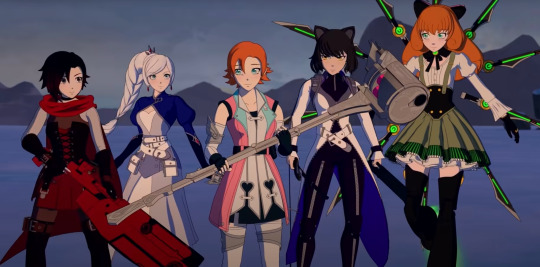
I already ruled Penny out, but everyone else here could be in contention to wield the Staff. Although, personally, I’m going to narrow it down to two:
Nora

A lot of people thought Nora was getting flags as a potential maiden last volume, from her resemblance to Fria to her possible Mantle origins to her vocal disagreement with Ironwood. It, obviously, didn’t pan out that way. But there’s still a couple things in her favour for her claiming the Staff of Creation:
“Always hoping that a lightning bolt is gonna save you from this gravity”
That’s the line from the V7 intro that perked a lot of people’s ears, and I still think it applies, possibly even more so. More than anyone, Nora represents lightning. Her main literary allusion is Thor, the Norse God of Thunder. Her semblance is powered by electricity, and her weapon generates it. In the history of Robyn calling highly amusing and accurate nicknames for our cast, Lightning Bolt could easily apply to Nora.
Gravity obviously applies to the weight of the severe situation our heroes find themselves in, but that’s not just all. It also, obviously, applies to the huge flags we’re getting that Atlas could plummet to the ground, destroying both it and Mantle and handing Salem a huge victory in her quest to ruin humanity.
That’s not guaranteed yet. If we expect volume 8 to go the way of volume 3, where there is a significant defeat for our heroes, that doesn’t automatically equal a complete and arbitrary annihilation. After all, Salem could crash Monstra into Atlas and achieve pretty much the same goal. The key thing that came out of volume 3 was that Beacon was destroyed - but not unreclaimable. There were slivers of hope, and the smaller soul remained.
And that’s where Nora could come in. She’s been a stalwart protector of the people, especially Mantle, and if she were wielding the relic, she’d definitely not want to doom them by using it - and, equally, not doom them by losing the relic. Nora was there when Neo took the lamp - she’s going to know that the same thing could happen, and so, she will save us from gravity - by using the staff to lower Atlas safely to the ground before taking it out of the vault.
Weiss
“After a while, I saw Weiss was defiance.”
This feeds more specifically into the possible theory that each relic will be claimed by a member of team RWBY. While Yang has maiden flags from Raven’s possible death, after Penny gaining the Winter powers and Ruby mastering her silver eyes, the RWBY maiden ending looks unlikely. But anyone can claim a relic.
Weiss has matured a great deal throughout the storyline of RWBY, but the ultimate character motivation for her has stayed consistent: she wants to reclaim her family’s legacy and restore it to one comparable to her grandfather’s, in opposition to the mismanagement of her parents. She is defiant towards them, to her brother and sister, towards Ruby, towards the general trend of history, and towards General Ironwood.

“NONE of this matters right now!”
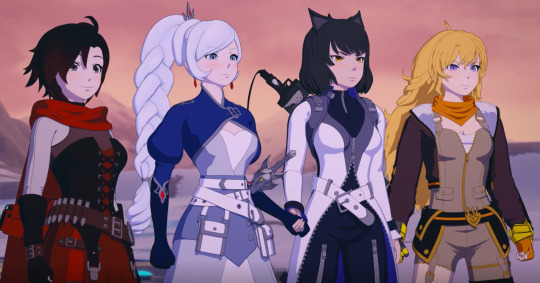
”Not friends. Family.”
So why Weiss, and not Nora?
Well, going back to the theory with the relics being claimed each by one of the members of Team RWBY, Salem is their end villain:
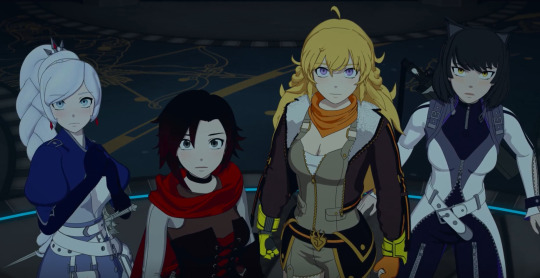
It’s team RWBY who are together confronting Salem in Ironwood’s office, and it’s team RWBY who’ll be stood together confronting her at the very end of all this. To do that, you need the relics.
To be sure, Nora is a member of the main cast - she’ll have an end villain to face off against, just like the rest of our protagonists - but even though it seems Tyrian is shaping up to be Qrow’s, Salem is very clearly not Nora’s. Arguably, we saw in Volume 5 that Nora is the only person capable of going toe-to-toe with Hazel:

“I don’t need him to hurt. I just need him to GO DOWN.”
Nora makes sense as Hazel’s eventual final foe - his origin story is being driven to work for Salem by his grief and possessiveness over his sister, who died as a huntress-in-training. Nora lost her teammate - a huntress-in-training - precisely because of Salem. We know she’s an orphan, and homeless - she likely has lost a great deal of people to the grimm. Morally, she’s the polar opposite to Hazel - someone whose hardship and grief made her a protector of the people, rather than someone on a doomed quest for vengeance for someone who would never have wanted it.
So if we rule out Nora for that sake, why Weiss, and not Ruby or Blake? Well, for one, Weiss has far more personal investment in Atlas as a whole.
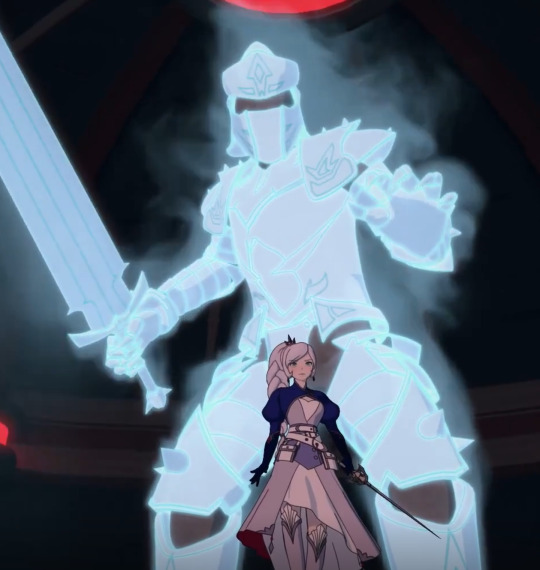
“This is my home. And I’m not giving it up without a fight.”
For Weiss’ own character arc to complete as we eventually move towards a resolution and a departure from Atlas, her family needs to survive. Jacques is fairly irrelevant, and his death would matter least - but Willow, Winter and Whitley need to survive, and the Schnee family needs to begin healing. That doesn’t square itself with Atlas falling to the ground and millions dying. But it could square itself with Atlas being lowered enough to survive without the Staff, and Salem still making off with it in order to attack Vacuo.
Weiss’ semblance also thematically fits with the relic of Creation - she has a mastery of dust, and her glyphs are used to create a range of different things. Her arc points now towards creating something new - a new future for her family, for the SDC, and for Atlas. It would make sense.
For their own relics, Ruby and Blake make more sense being involved with Vale and Vacuo. While Blake is from Menagerie, not Vacuo, the Sword of Destruction would resonate well with her character arc. It’s a symbol of how she, and the faunus, have grown - the power to destroy, but rather than used angrily and blindly like Adam would, used carefully, with great thought. As well as this, the symbolism of the sword - taking up arms and fighting, rather than running away.
And Ruby is just obviously choice. She’s the central character of the Vale arc, one of her most defining traits is determination - the choice to never give up and keep moving forward, that we’ve heard referenced more than once post-Vol 3. But, if you’re wanting a bit more in the way of arguable evidence - who’s younger than the rest of their team of four, is pure of heart, makes choices that fundamentally determine everyone’s paths, and ends up with a crown?
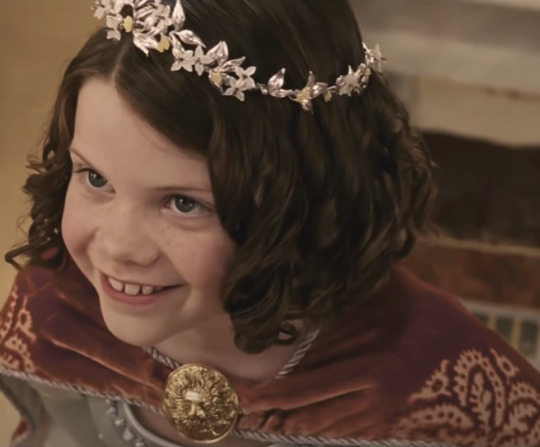
So that’s where I’m staking my claim. Yang, the Strong, giver of Knowledge. Weiss, the Defiant, guardian of Creation. Ruby, the Pure, defender of Choice. Blake, the ???, arbiter of Destruction.
The only thing we’re missing is what embodiment Blake actually is.
#rwby#long post#rwby8#rwby v8#rwby 8#rwby volume 8#penny polendina#penny#ruby rose#ruby#weiss schnee#weiss#yang xiao long#yang#nora valkyrie#nora#rwby spoilers#rwby theory#rwby 8 spoilers#rwby v8 spoilers#rwby volume 8 spoilers#i will shoehorn narnia into rwby by any means necessary
64 notes
·
View notes
Text
Ranking : Jim Jarmusch (1953 - present)
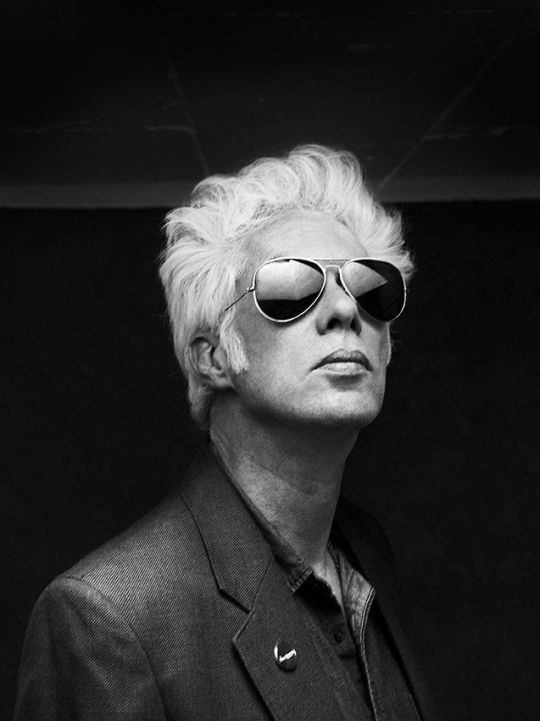
When you get someone adept at the art of filmmaking that can resonate at the highest vibrations when creating, that is a blessing in itself, but when you get a jack of all trades, everyman who is deeply observant and unabashedly humanist, and happens to make films to boot, then you start reaching the realms of Jim Jarmusch. As a Midwestern kid who studied at New York’s famed Columbia University before transitioning to a span in Paris, Jarmusch has the unique gift of deeply appreciating lofty art on the same level as outsider, underground art, and by understanding the context that connects all of them, his appreciation of time is enhanced by association. In a world that has become obsessed with taking in information with no intention of retention at a breakneck speed, it is refreshing to know that Jim Jarmusch has stood his ground in terms of deliberate pacing and tone.
Most of my Jarmusch familiarity came from the first half of his catalog, and it’d been years since I watched his work, so rather than rank what I remembered while trying to fit first watches in, I decided that the time was right to revisit the entire catalog. Doing so not only gave me a broader understanding of his overall vision, but it made me realize that a director with 25 years in the game is still capable of making drastic style shifts. Without further ado, here is my preferential ranking of the 13 Jim Jarmusch films available as of March 2021.

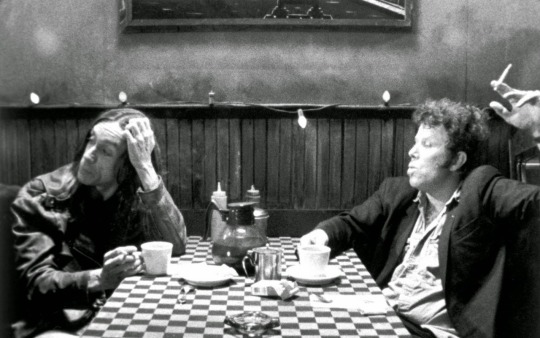
13. Coffee and Cigarettes (2003)
This isn’t a bad film, but Coffee and Cigarettes definitely reeks of a narrative-less venture. The best parts of Coffee and Cigarettes come in attempts at placing what was shot explicitly for the film, versus what was shot during the previous fifteen or so years that Jim Jarmusch directed other feature films. Taken as a collection of independent vignettes, the film is rich in memorable moments, but for a director so adept at unifying themes with incredible nuance, specifically within the obtuse hurdles presented by an anthology film, Coffee and Cigarettes feels much more like assorted pieces than a fractured whole. More so than an original idea, the movie feels like a deep cut that true fans will appreciate, casual fans can easily reference, and Jarmusch-laymen can use as an entry into deeper conversations. If nothing else, see Coffee and Cigarettes for the incredibly entertaining scene where Cate Blanchett acts circles around Cate Blanchett, but Cate Blanchett still does her thing.

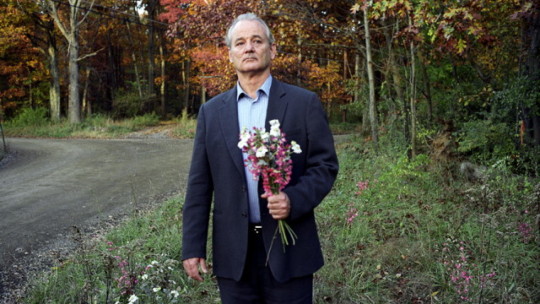
12. Broken Flowers (2005)
Bill Murray has been popular longer than I’ve been alive, but somewhere around the beginning of the 21st century, it seemed like the entire world caught Bill Murray fever in a major way. After a couple of iconic roles in films by Wes Anderson and Spike Jonze, his star was riding new and unfathomable highs, and that was right when Jim Jarmusch teased collaboration via Coffee and Cigarettes before diving headlong into it with Broken Flowers. Of all the Jim Jarmusch films, this one still feels the least like his style, at least in terms of purity. Most of its magic comes from surrounding Bill Murray with Jeffrey Wright as a human conscience, as well as a parade of memorable actresses the likes of Sharon Stone, Frances Conroy, Jessica Lange, TIlda Swinton, Chloë Sevigny and more. The film runs high on charm, and for any man staring at the Autumn of his years, the feelings of romantic regrets are likely relatable on some level. Interestingly, this project feels like one of the most accessible in the Jarmusch canon, perhaps because of its efficient production presentation. If there were ever a Jim Jarmusch date movie, it’s Broken Flowers.

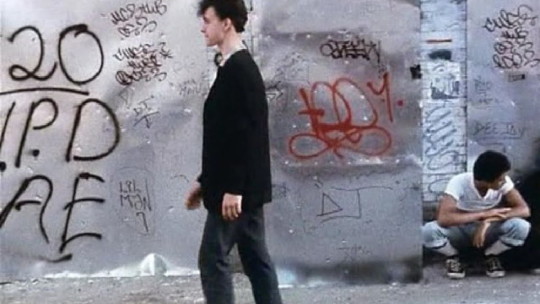
11. Permanent Vacation (1980)
Upon initial viewing, Permanent Vacation possesses many of the earmarks of a student film, such as limited locations, long passages with minimal dialogue, symbolic monologues in place of standard narrative dialogue, and isolated characters within the context of an implied bigger world. The strengths that the film possesses, however, are elements that became staples in Jim Jarmusch films : a protagonist either absent of motivation or driven from within, cross-cultural fascination and iconography and the aforementioned patient approach to narrative are some of the key ingredients in the Jarmusch recipe. As a unique voice in a burgeoning New York collective of filmmakers, it makes total sense that his debut would be both an ode to New York City and an ode to living life like an outsider in the mecca of culture. This film probably wouldn’t be the best place to start a curious party to the Jim Jarmusch canon, but it would certainly be one to circle back to if their interest is piqued… I would recommend this one to fans of Richard Linklater’s early work for sure.

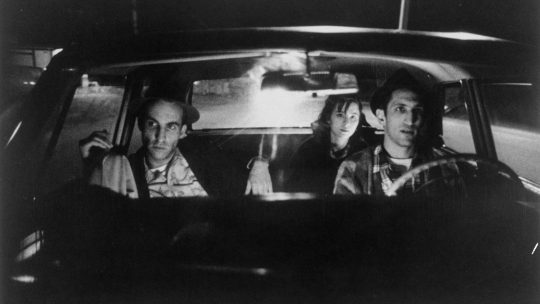
10. Stranger Than Paradise (1984)
Stranger Than Paradise marks the first of many black and white commercial releases from Jim Jarmusch. As a second film, it has everything you’d want to see from a director finding his place in the industry : the cinematography has evolved and incorporated more movement, Jarmusch is starting to let his personality shine through via musical choices, and the stories are evolving into more relatable narratives rather than ruminations on isolation (while simultaneously becoming much funnier). Jarmusch still isn’t afraid to let his films breathe, however, which leaves his distinct style present even among the areas of growth. The incorporation of a strong female lead presence (thanks to Eszter Balint’s brilliant performance) showed that Jarmusch had a full understanding when it came to presenting stories for everyone on the screen, rather than limiting his voice to male characters. The casting of John Lurie and Richard Edson opposite one another is kinetic both visually and in terms of performance, as each of their versions of uptight laid-backness compliment one another.

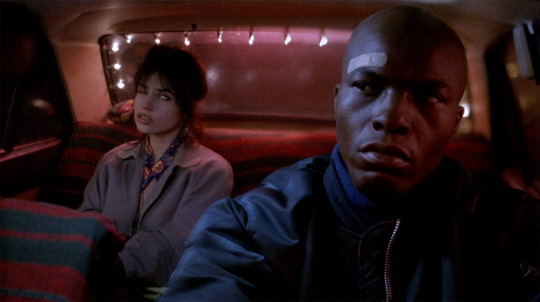
9. Night on Earth (1991)
Of the anthology films that Jim Jarmusch has created, Night on Earth is possibly my favorite. More so than any of the others, it captures the intriguing aspects of human nature by juxtaposing them directly against the very human tendency to judge books by their covers. With the vast majority of the film taking place in a handful of taxi cabs, we are left in the hands of the actors and actresses in the hopes that their interactions, chemistry and dialogues can keep us captivated, and the cast presented in the film completely stand up to the challenge in their pairings. Jarmusch also presents movie audiences with a way to show different worldly locations without having to lean on the cinematic and iconic shorthand that we are used to, such as the Hollywood sign, Times Square, the Eiffel Tower and so on… instead, we are shown places that locals would inhabit in all of their rundown and lived in glory, which in turn, amplifies the grounded realness of the interactions, as if we are looking at a fictional blueprint for what would later become the popular HBO series Taxicab Confessions. This film sits in-between two of Jim Jarmusch’s most iconic releases, so it is easy to see how this one could be easily lost in the shuffle, but it is certainly not a film to be missed, especially for those who would consider themselves Jarmusch fans.


8. Paterson (2016)
Jim Jarmusch brings a humble sense of humanity to all of his films, but Paterson stands out for its nuance, subtlety and confidence in its patience. Much like Forrest Gump or a less abstract Charlie Kaufman film, Paterson dwells in an interesting realm of an unknowingly wise protagonist tethered to the center of tornado-like emotions and experiences from all they encounter. Jarmusch manages to take this framework, dial down the absurdity to a sneaky degree, and ramp up the grounded elements to the point where a viewer cannot help but graft pieces of themselves onto the events presented. As a musician with a day job, I can also relate to Paterson’s displays of beauty found in redundancy, and the peace that comes with understanding intentions for creative expression, even if others see it in a different light that you do. While not the grandest of Jim Jarmusch gestures, it is without a doubt one of the most sincere and heartfelt of his selections.

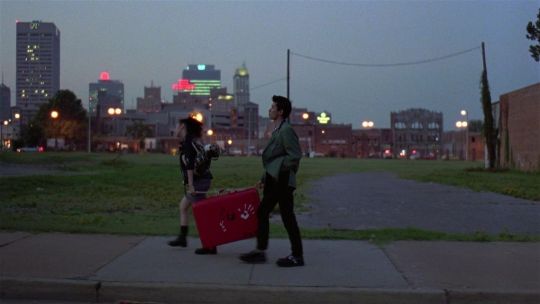
7. Mystery Train (1989)
Mystery Train marks the first definitive signs of Jim Jarmusch knowing, understanding and utilizing the tools he’d come to favor in a manner that seemingly resonated what he pictured in his head. Memphis as a setting provides the juxtaposition of beauty and urban decay captured in Permanent Vacation; placing our audience on a journey with two foreign tourists brings the worldly view introduced in Stranger Than Paradise; and, most importantly, all of the coolness and humor that thrived in Down by Law returns triumphantly. Jarmusch also puts anthology filmmaking on the table, which is important for two reasons… first and foremost, it would become a style he would go on to thrive in, returning to it immediately with Night on Earth and once more with Coffee and Cigarrettes… secondly, as for Mystery Train directly, it allowed Jarmusch to surround Masatoshi Nagase and Youki Kudoh (burgeoning stars Western audiences were unfamiliar with) and Nicoletta Braschi, and surround them with his talented friends like Steve Buscemi, Cinqué Lee, Rick Aviles, Vondie Curtis-Hall and Tom Noonan, as well as legendary musicians like Tom Waits, Joe Strummer, Screamin’ Jay Hawkins and Rufus Thomas. Between these high profile castings, the stylish cinematography and the heartfelt quirkiness of the leads, Mystery Train feels like the film where everything came together in the best ways possible.


6. Down by Law (1986)
To my knowledge, Down by Law would be considered the breakout success of the Jim Jarmusch library. John Lurie returned to the fold to provide another performance infused with coolness, but this time around, up and coming Italian star Roberto Benigni and iconic recording artist turned actor Tom Waits share lead duties, forming an unlikely trio with monstrously dynamic on-screen chemistry. Jarmusch not only switched things up for himself by setting the film in New Orleans rather than centering it around New York, but he turned the jailbreak genre on its ear by focusing on the escapees rather than the escape itself. The conflict between Jack and Zack is seeded with their individual problems with women (which both include emasculating each man by chastising them for not using domestic violence), as well as each of them ending up framed prior to imprisonment, which makes Roberto the de facto peacemaker despite his huge language barrier. Down by Law marks the first time that edginess found its way into a Jim Jarmusch film, and while it never became his forte, it wasn’t the last time that element was key to a Jarmusch film.

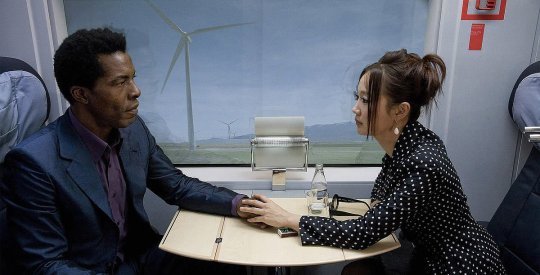
5. The Limits of Control (2009)
When reflecting on The Limits of Control, the word patience comes to mind : the patience of accepting repetition… the patience of a trilingual film with minimal dialogue… the patience of a film that shows much more than it tells. As a take on noir, the Jim Jarmusch variety brings to mind films like Le Samourai, where actions speak infinitely louder than words, choices come with a definitive set of consequences, and we as viewers are allowed to consider what we are presented with in real time, just like our protagonist. The coolness levels are also pushed to maximum levels in this film, but then, what’s a Jim Jarmusch film without a generous dose of cool in it? While it is never rightly stated, I like to pretend that The Limits of Control takes place in the same universe as Ghost Dog, with Raymond having evolved into The Lone Man using the tools left behind by Ghost Dog. Maybe it’s a bit of embellishment on my end, but it makes an already great film have that little extra touch of pizazz needed to stand out from the pack.


4. Ghost Dog: The Way of the Samurai (1999)
While Jim Jarmusch isn’t necessarily a household name, he is relatively well known, and for many familiar with his work, Ghost Dog: The Way of the Samurai served as the introductory film for them. The casting of Forest Whitaker in the lead role continued the trend of higher profile names joining the Jarmusch fold, and stylistically, the mixture of Ghost Dog’s hitman and samurai worlds with that of the mafia film (which was about to see a popularity resurgence in light of the recent premier of The Sopranos) was alive, kinetic, and rich with varied personalities. Ghost Dog: The Way of the Samurai also stood as an early example of RZA’s talents in the realm of scoring films, which would later go on to be a key element of Kill Bill: Vol. 1. For a movie with a more traditional approach, perhaps even the most accessible approach of all Jarmusch films, Ghost Dog: The Way of the Samurai is anything but conventional, and it’s the sense of pride it wears in its non-conventionality that makes it the cult classic it became.

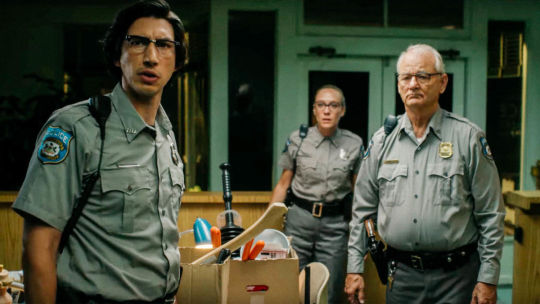
3. The Dead Don't Die (2019)
Not since Dead Man has Jim Jarmusch picked such a distinct genre for a film of his, or decided to include such a long list of high profile names in character roles. While the sense of doom that usually comes with zombie movies is present, Jarmusch sticks to his toolkit by focusing solidly on the human element during the early portions of the film where many people would already have zombies doing the narrative and visual heavy lifting, and in turn, the audience finds themselves drawn deeper and deeper into the story well before the undead arrive. Of all the Jarmusch films, The Dead Don’t Die has the rare designation of being the only one that seems to comment on film itself, be it references to iconic characters from other properties, ruminations on film as a format, or even discussions centered around film fandom. While most films tend to stay around from outright explanations of whatever the root cause of the zombies are, The Dead Don’t Die uses the vacuum as a brief opportunity to make a comment on polar fracking and other climate/environment-altering processes. Even the zombies get the most on-screen humanity received since the days of George Romero’s Dead series, a refreshing change of pace that has been often ignored in recent films centered around the undead. Films like this one prove that Jim Jarmusch has the capacity to make films about most anything, and the further he strays from his supposed comfort zone, the seemingly better the films get.

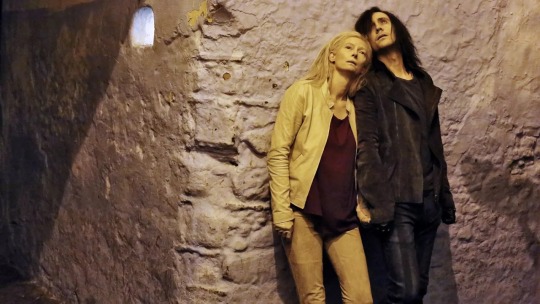
2. Only Lovers Left Alive (2013)
For a man so dedicated to being aware of the passage of time, a man with a deep appreciation for nostalgic cool of all eras, and a man with a rich and layered appreciation for art and music from across the board, it makes total sense that Only Lovers Left Alive would be a celebration of all these aspects framed as an eternal love with a deep cross-section between the original lovers and the tales of vampires. The vampiric leads allow Jarmusch the perfect vehicle to seamlessly tie stellar creativity from any point in time with a singular line, and the deep implications of our protagonists' names suggest a subtextual lore that one could likely build a cinematic universe around. For a venture with aspirations this lofty, the casting must fit the call, and the main four of Tilda Swinton, Tom Hiddleston, John Hurt and Jeffrey Wright build a solid foundational square for all characters to navigate deep emotions freely. If you’re looking for Twilight and Interview with the Vampire fare, you’ll probably long for more, but if films like Let the Right One In are more your speed, then Only Lovers Left Alive will likely be a revelation.


1. Dead Man (1995)
While Jim Jarmusch never lost his auteur sensibilities, Dead Man marked his initial foray into the world of larger scale traditional productions through the vehicle of the period piece. Jarmusch films were not unfamiliar with showing us a broader view of the world we know, but transposing his trademark style into the world of the Western marked a bold (but ultimately rewarding) turn. With Neil Young serving as his Ennio Morricone, Jarmusch dusted off his black and white filmmaking equipment and seemingly told the production design team to blend all of the best parts of Spaghetti Western and German Expressionism. Johnny Depp, the film’s star, was riding the wave of success afforded from What’s Eating Gilbert Grape?, Benny & Joon and Ed Wood, and Dead Man carried that momentum right along. As for his Western universe, the list of names that Jarmusch chose to populate it with is where his style stood out : Crispin Glover, John Hurt, Robert Mitchum, Iggy Pop, Gibby Haines, Gabrielle Byrne, Billy Bob Thornton, Alfred Molina and more drive home Depp’s “fish out of water” characterization convincingly. Based on its period-piece designation, Dead Man signalled a drastic leap in style utilization for Jarmusch, a creative rarified air that he would return to for several future productions.
#ChiefDoomsday#doomonfilm#JimJarmusch#PermanentVacation#StrangerThanParadise#DownByLaw#MysteryTrain#NightOnEarth#DeadMan#GhostDogTheWayOfTheSamurai#CoffeeAndCigarettes#BrokenFlowers#TheLimitsOfControl#OnlyLoversLeftAlive#Paterson#TheDeadDon'tDie
14 notes
·
View notes